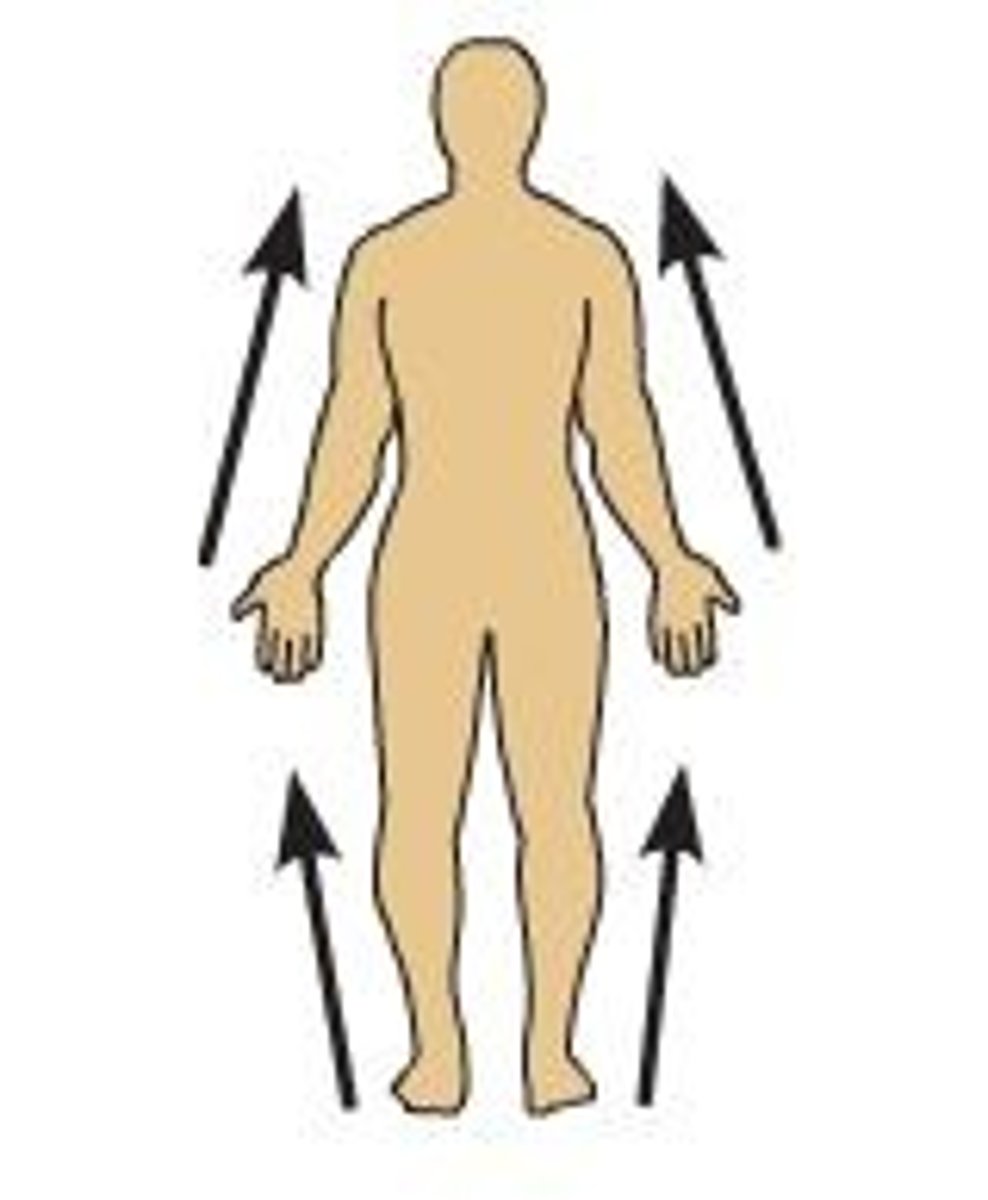S138 Fetal Pig Dissection FLORES
1/48
There's no tags or description
Looks like no tags are added yet.
Name | Mastery | Learn | Test | Matching | Spaced |
|---|
No study sessions yet.
49 Terms
Diaphragm
Large, flat muscle at the bottom of the chest cavity that helps with breathing
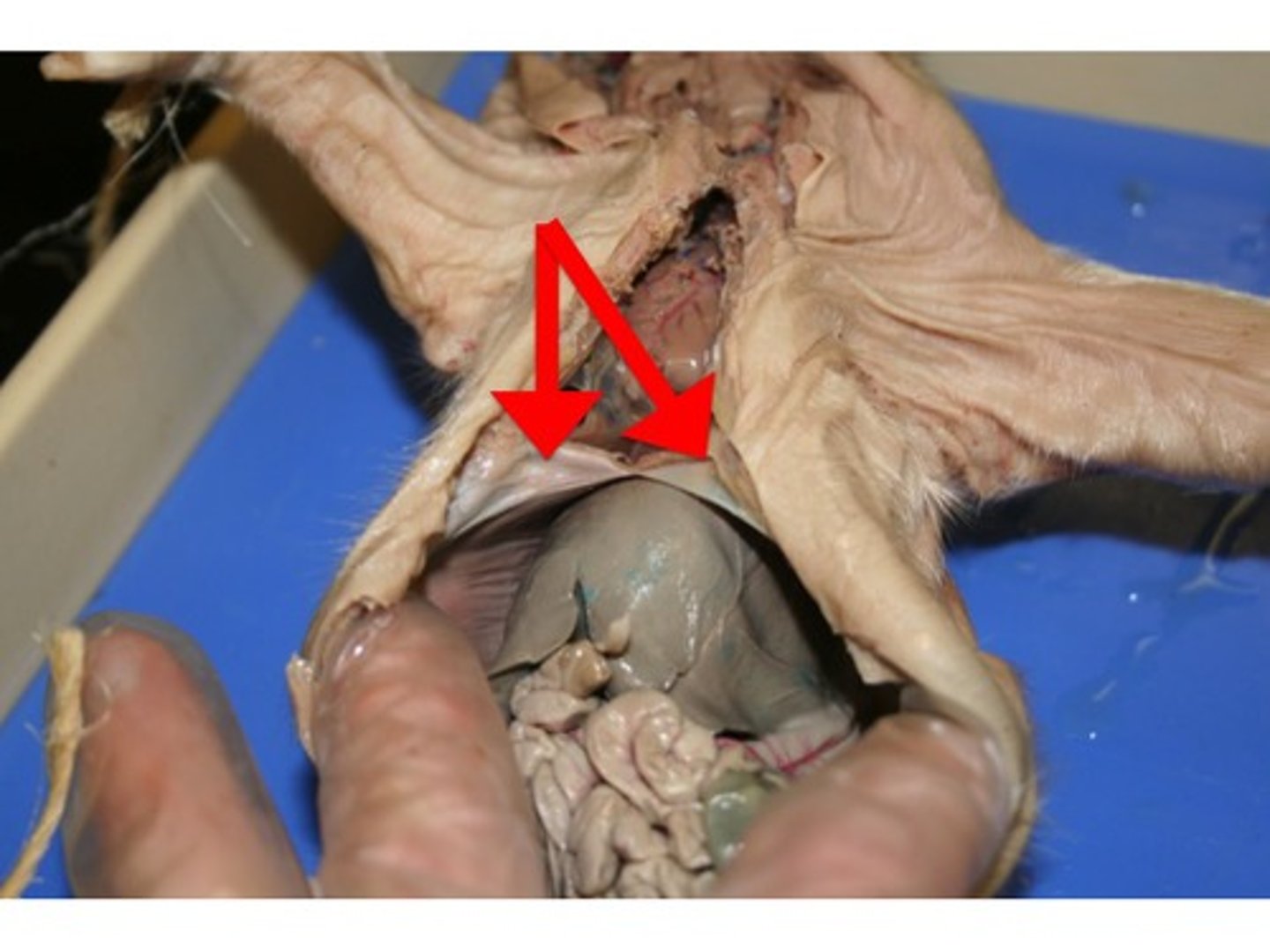
Small Intestine
The part of the digestive system in which most chemical digestion takes place.
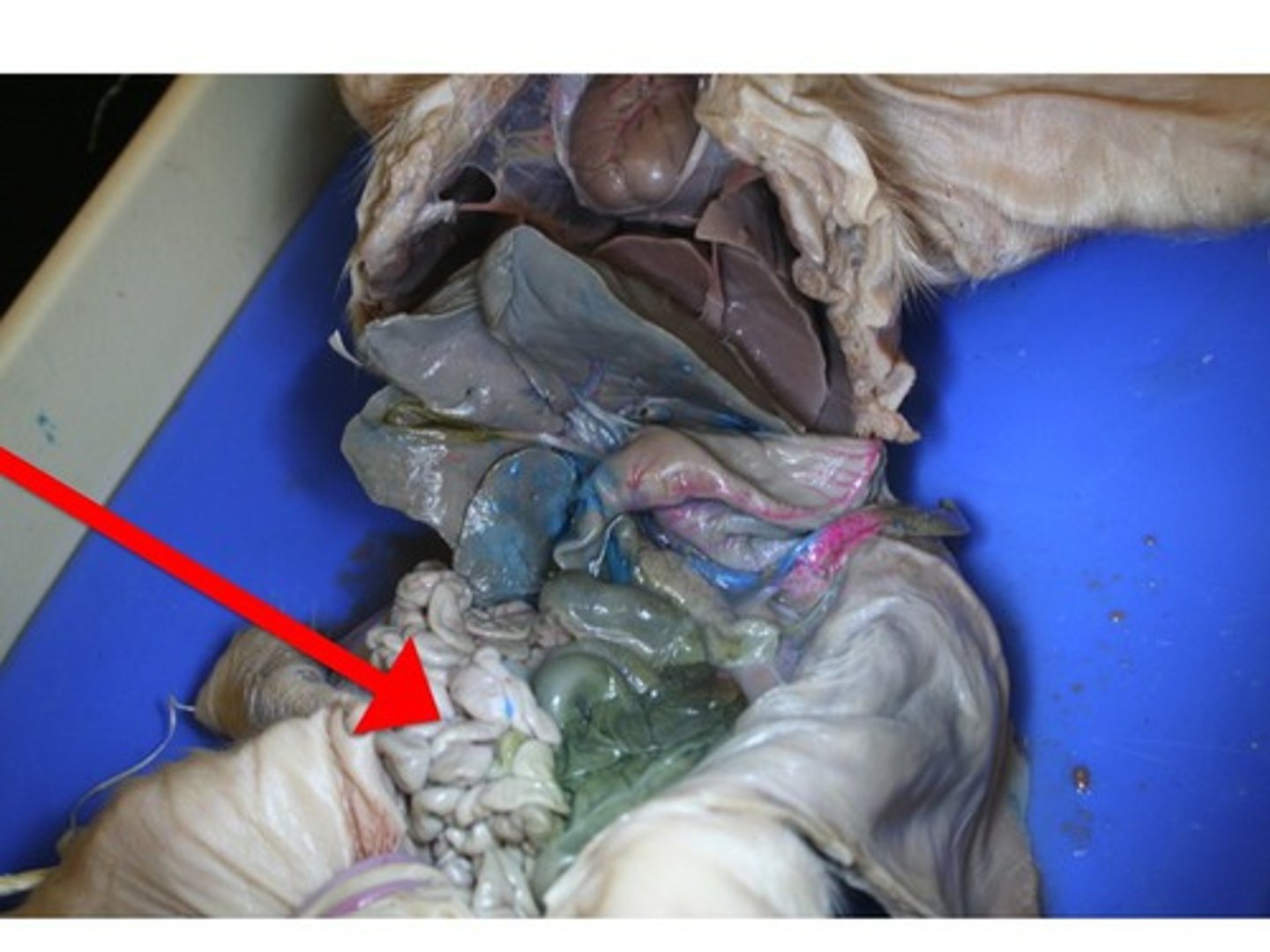
Gall Bladder
stores bile
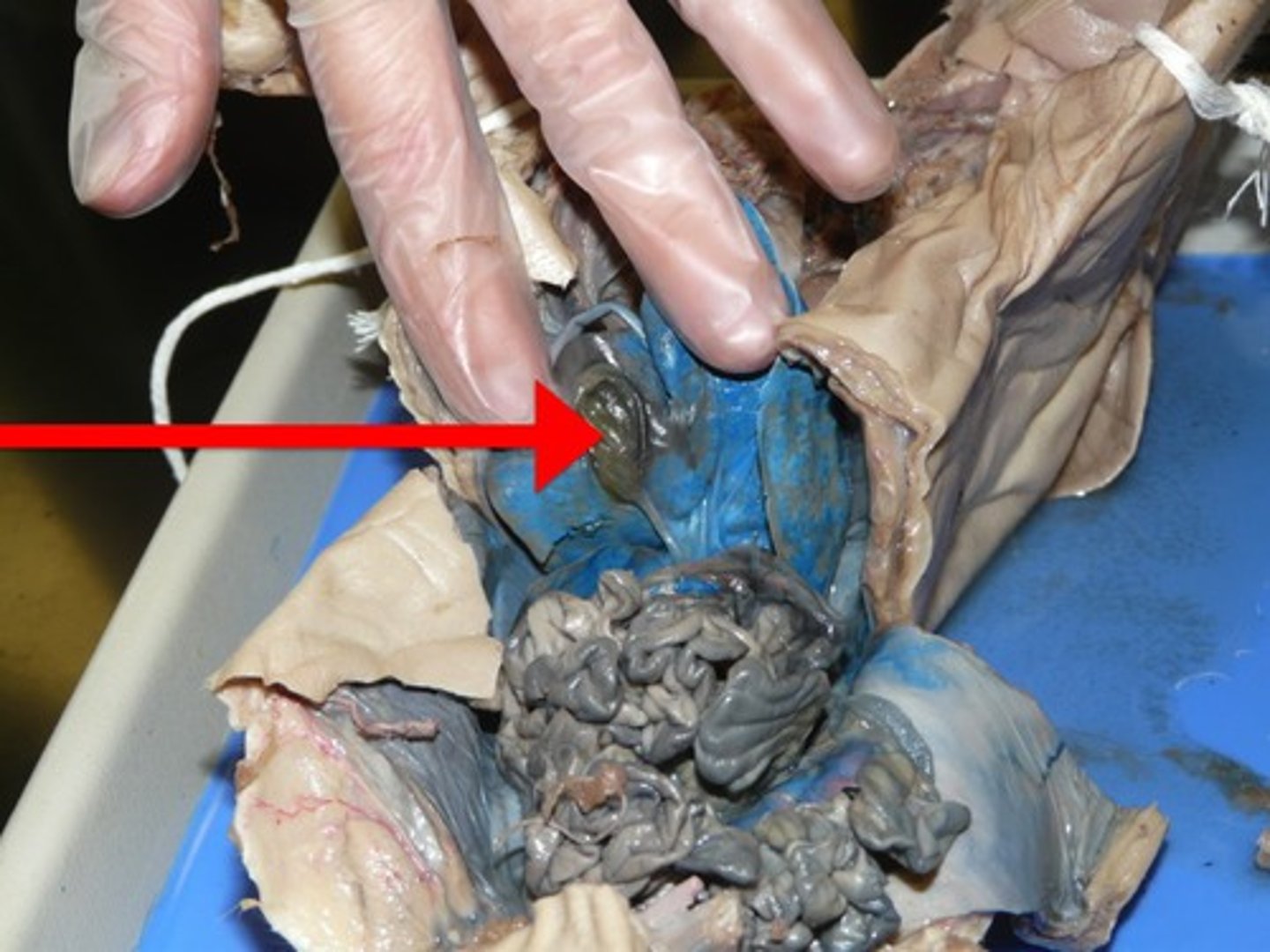
Spleen
Organ near the stomach that produces, stores, and eliminates blood cells
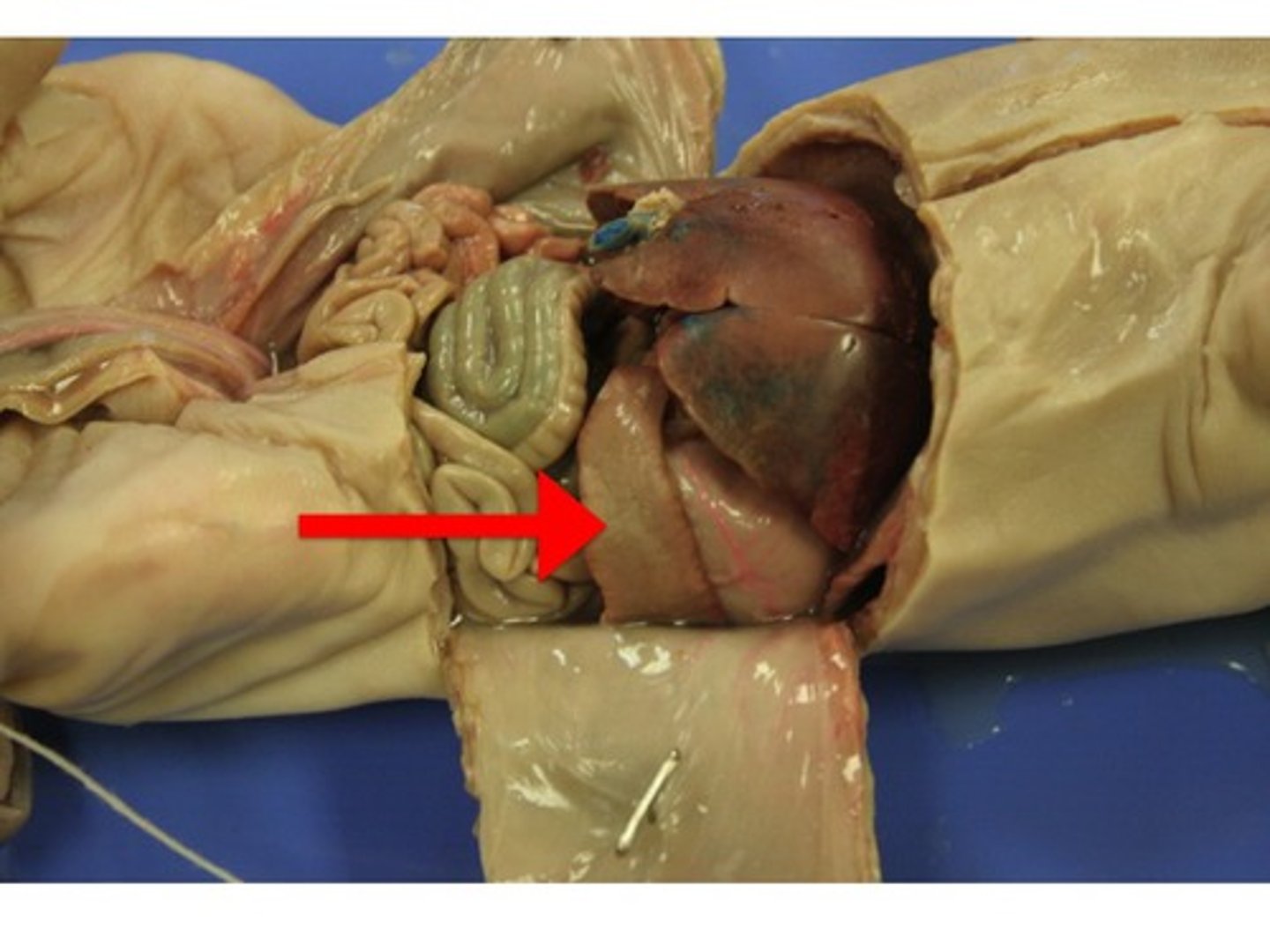
Liver
produces bile
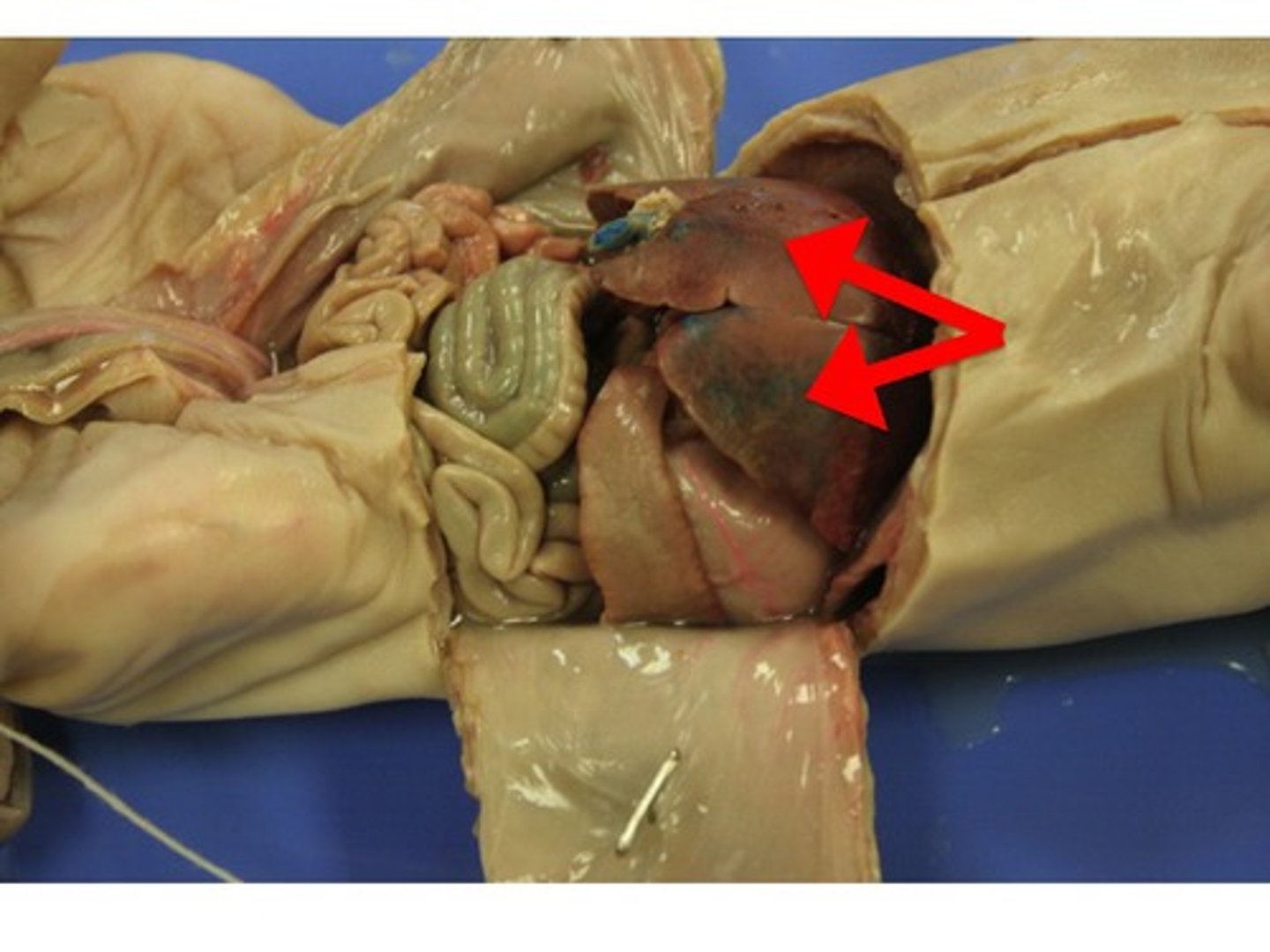
Stomach
large muscular sac that continues the mechanical and chemical digestion of food
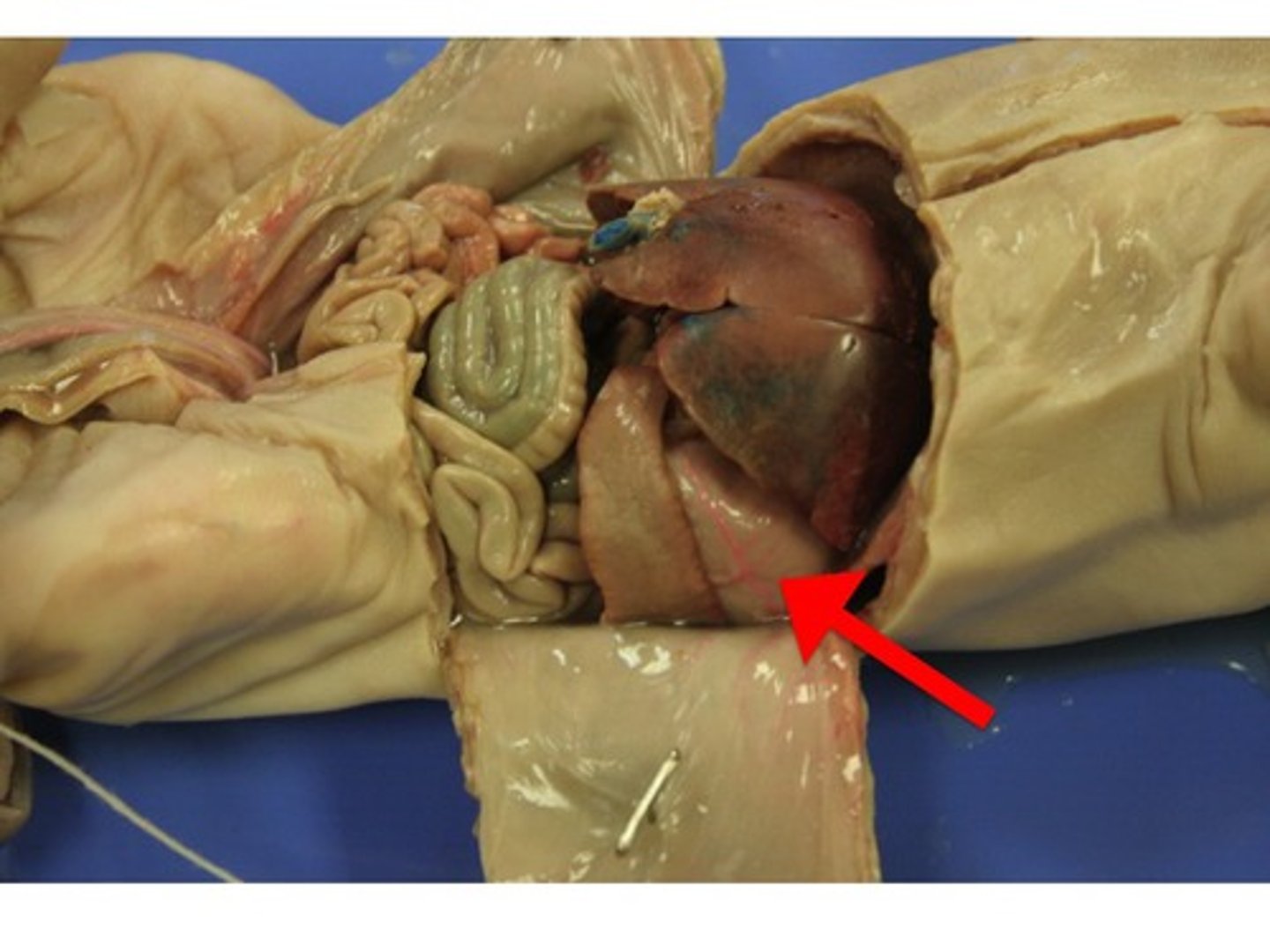
Pancreas
Regulates the level of sugar in the blood
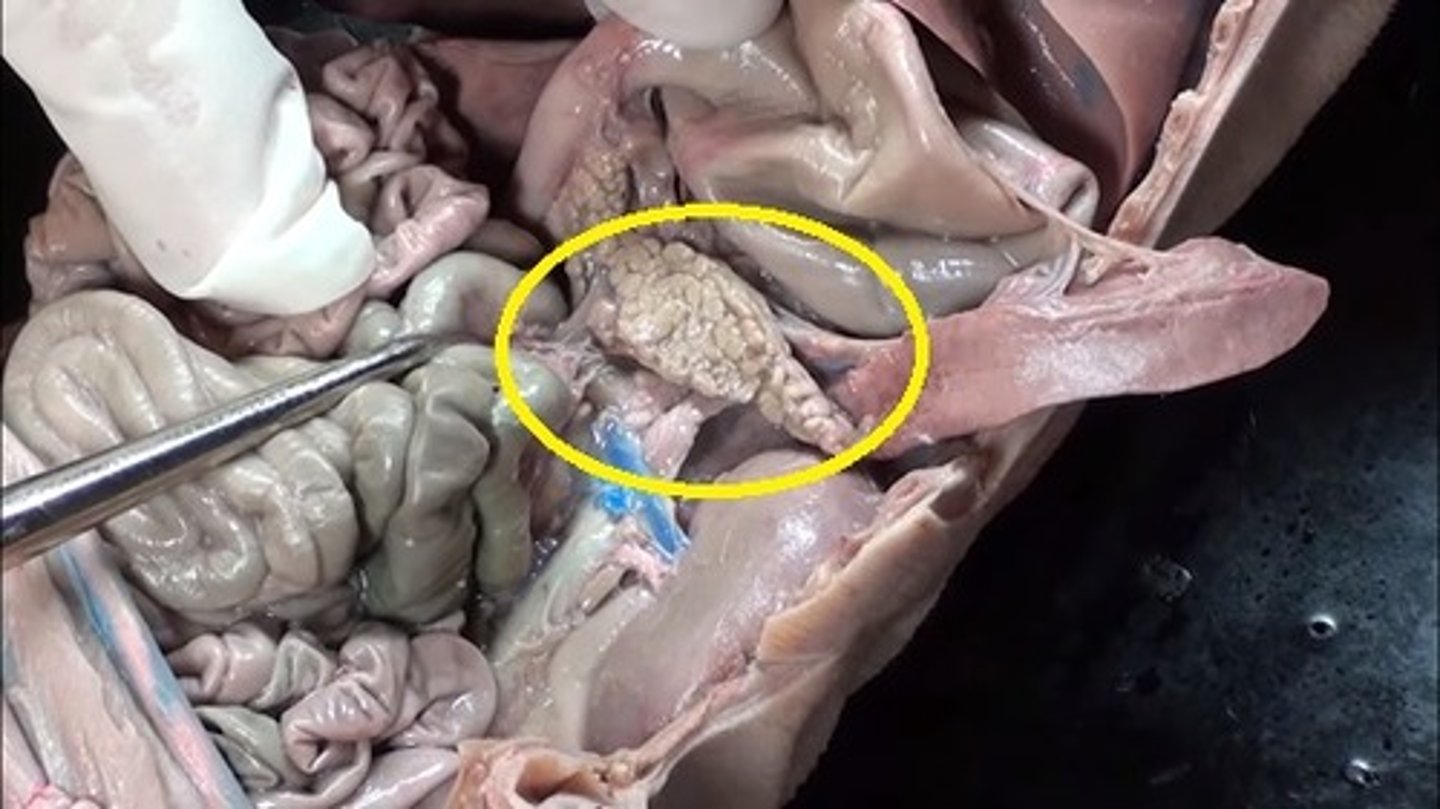
Heart
pumps blood
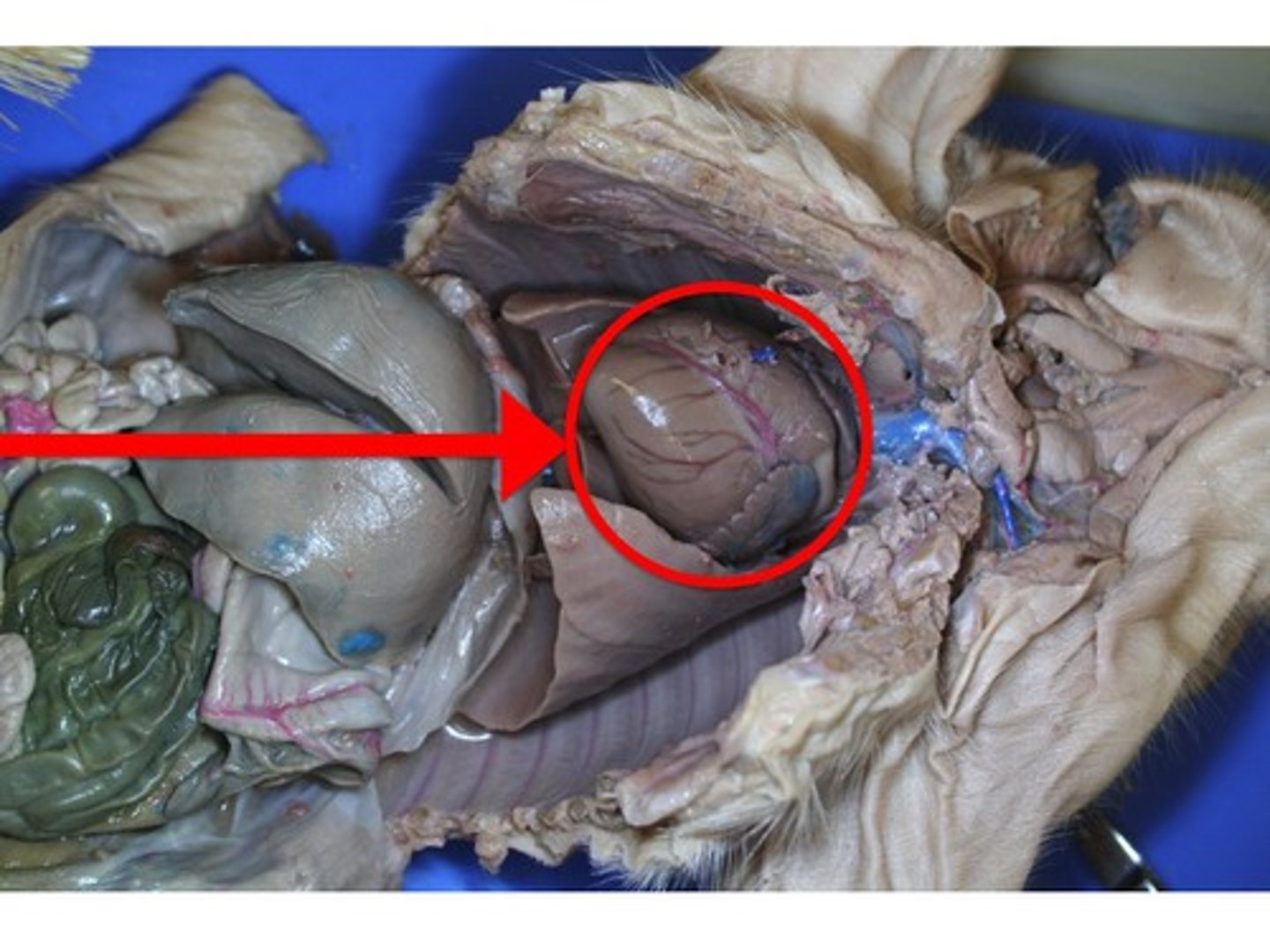
Lungs
Main organs of the respiratory system
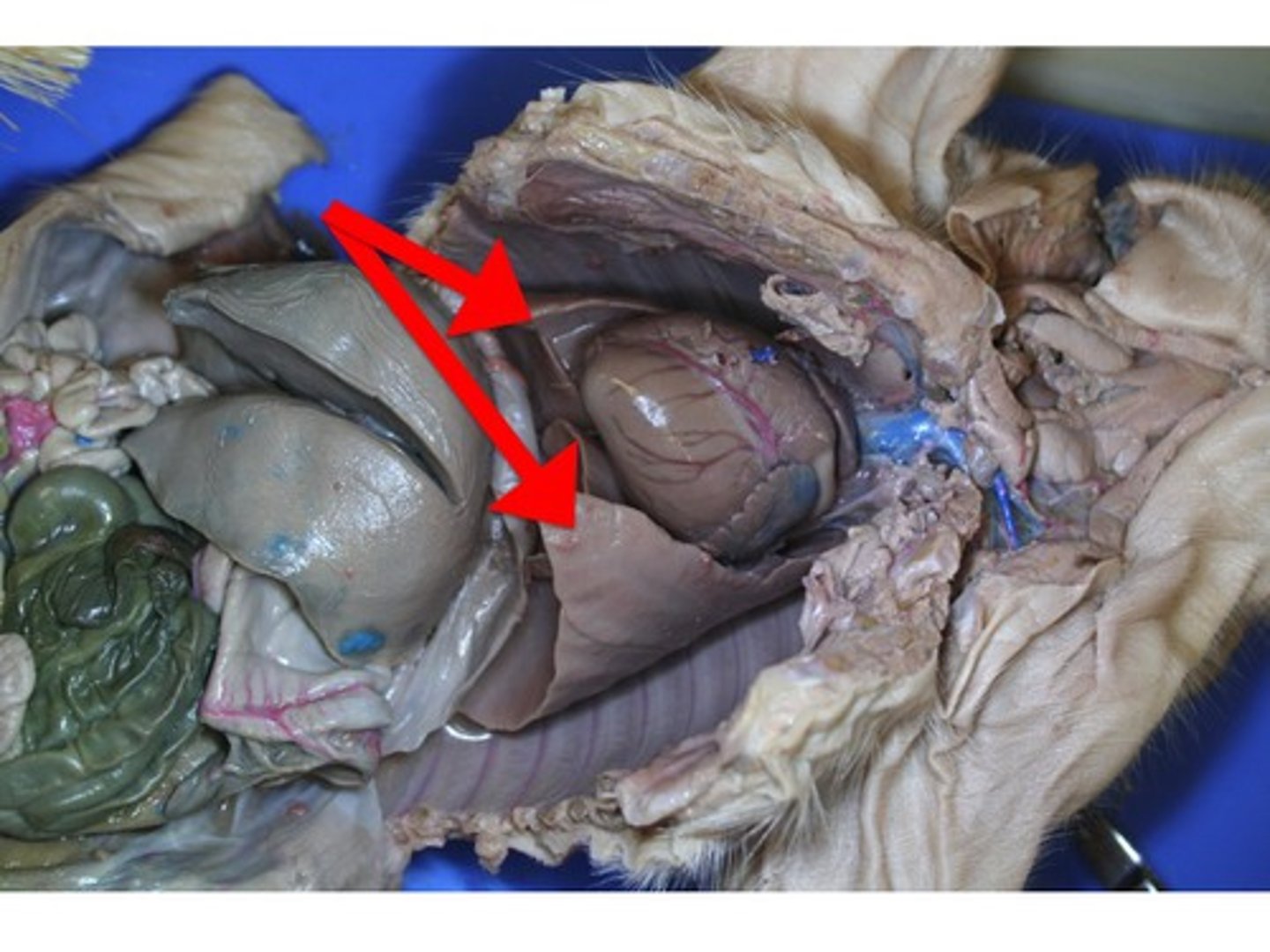
Coronary Artery
The artery that supplies heart tissue with blood
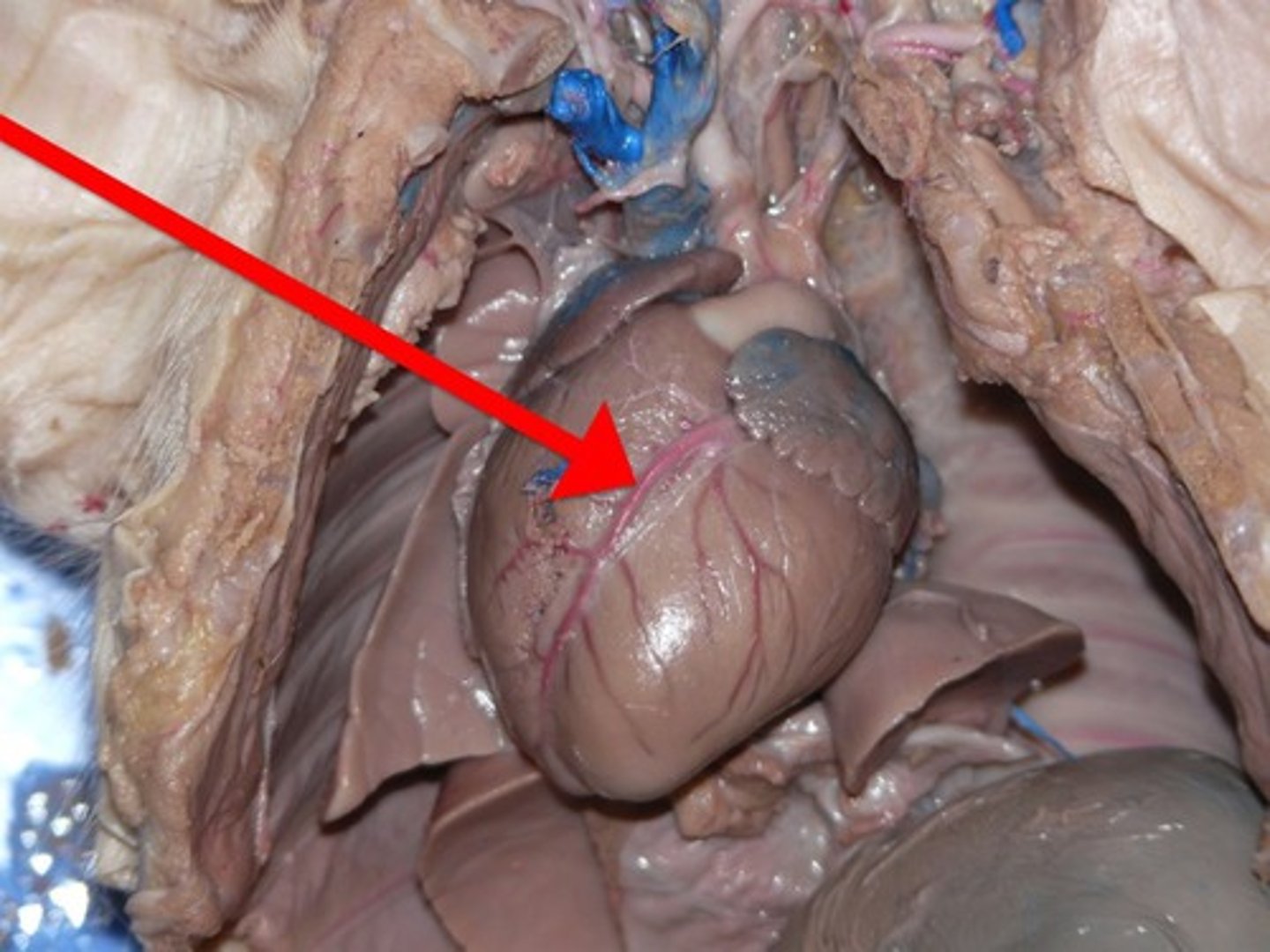
Left Atrium
receives oxygenated blood from the lungs
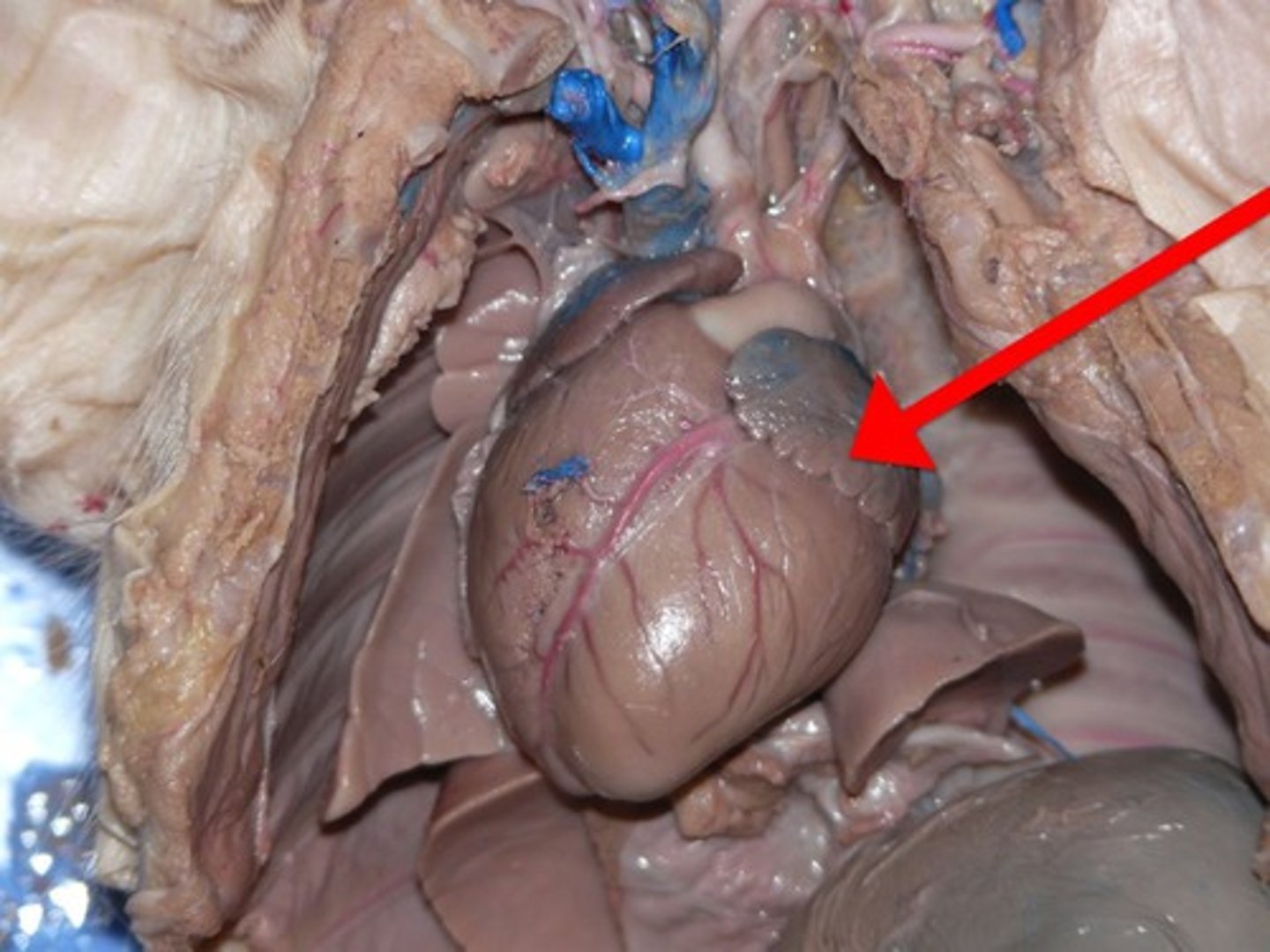
Left Ventricle
Pumps oxygenated blood into the aorta
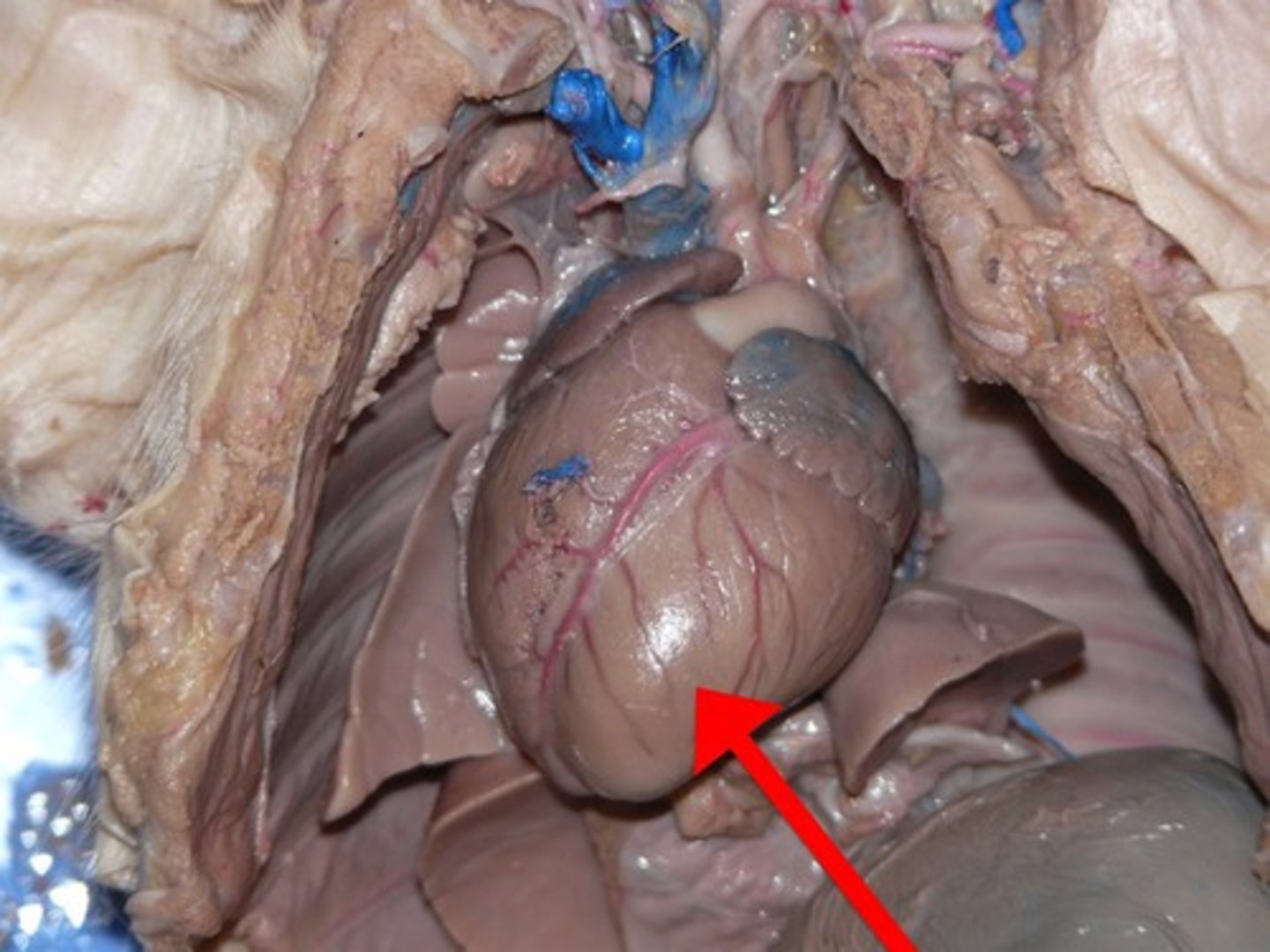
Right Ventricle
pumps deoxygenated blood to the lungs
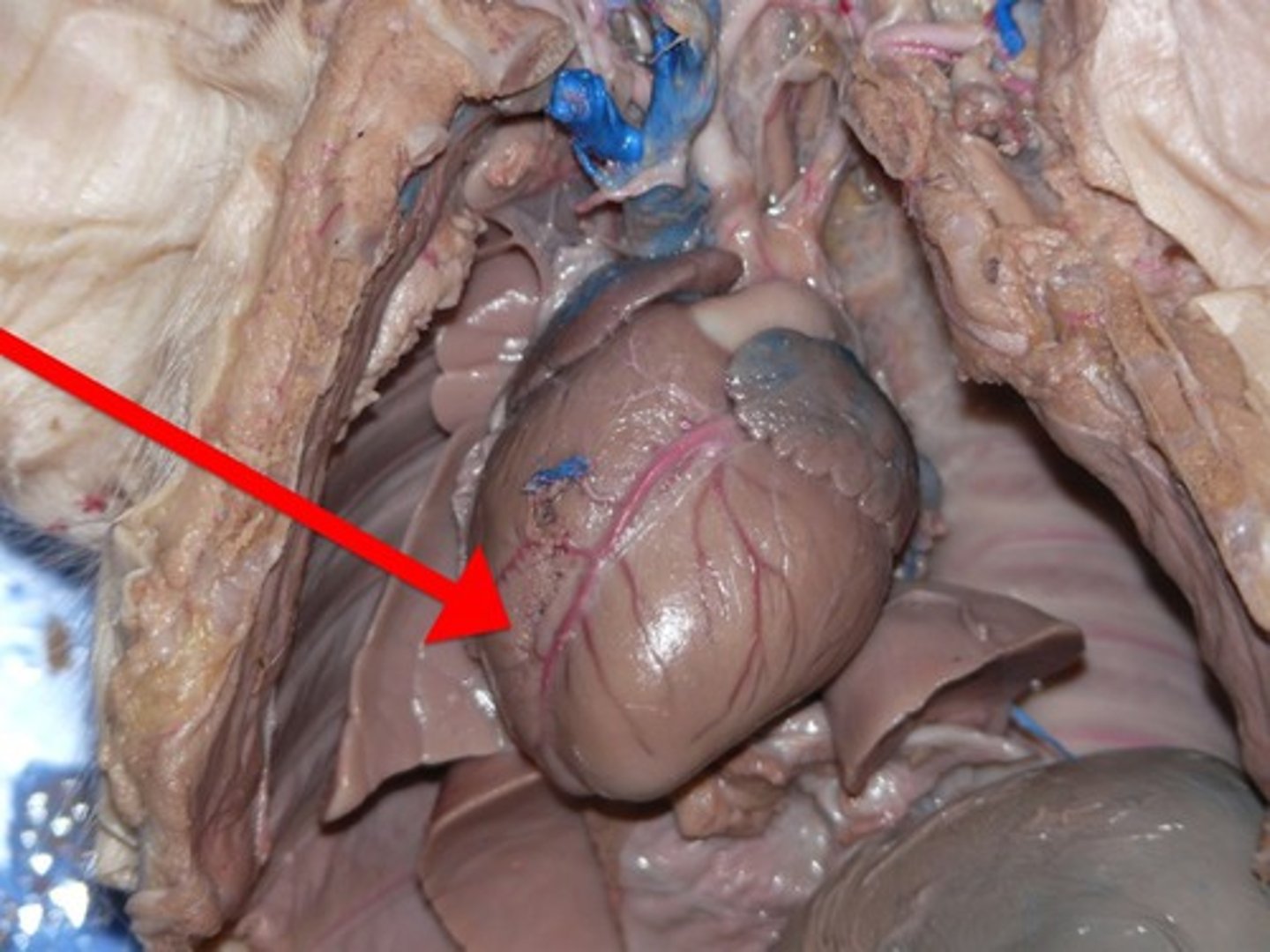
Soft Palate
a muscular flap that closes off the nasopharynx during swallowing or speaking
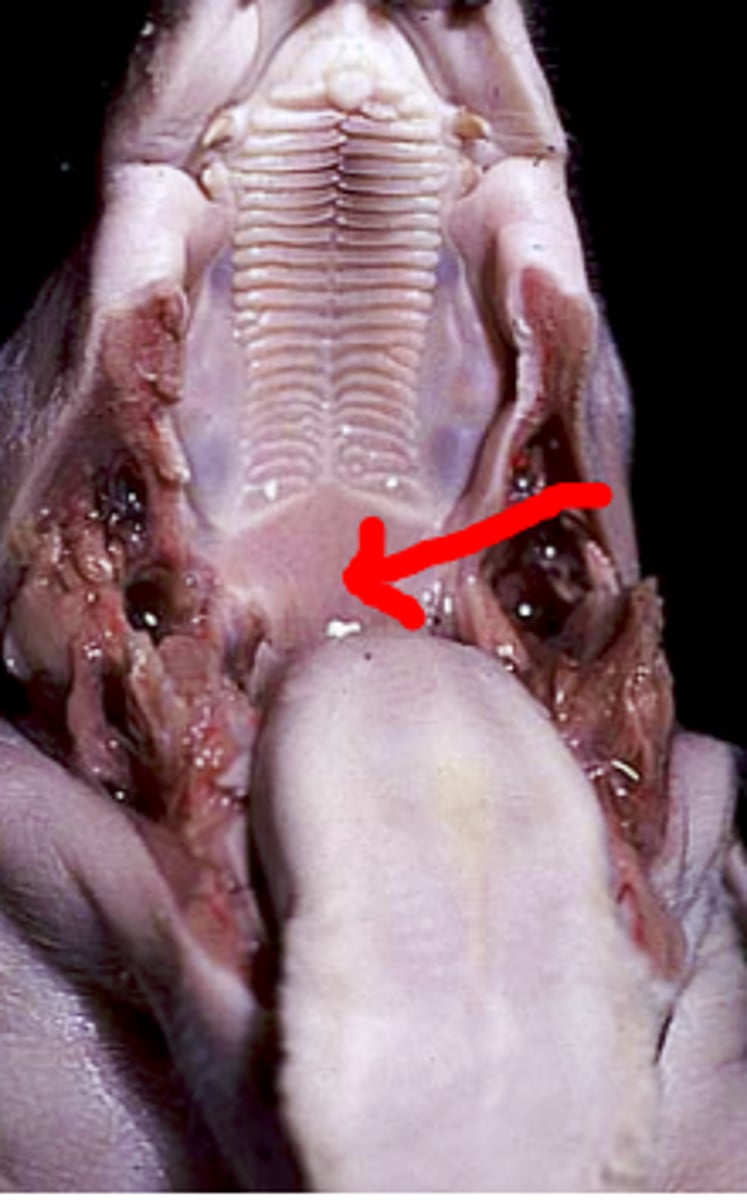
Epiglottis
A flap of tissue that seals off the windpipe and prevents food from entering.
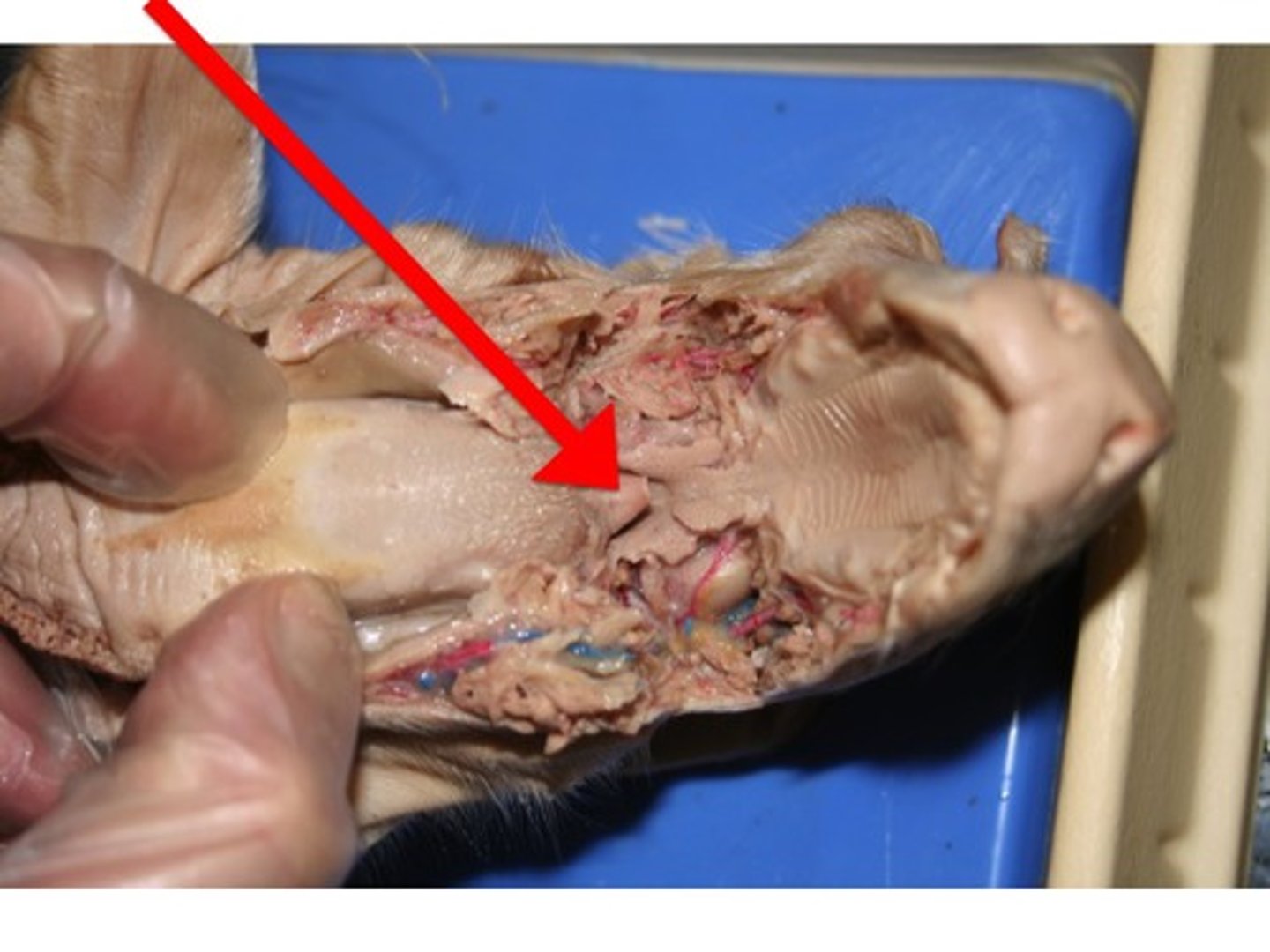
Hard Palate
roof of the mouth
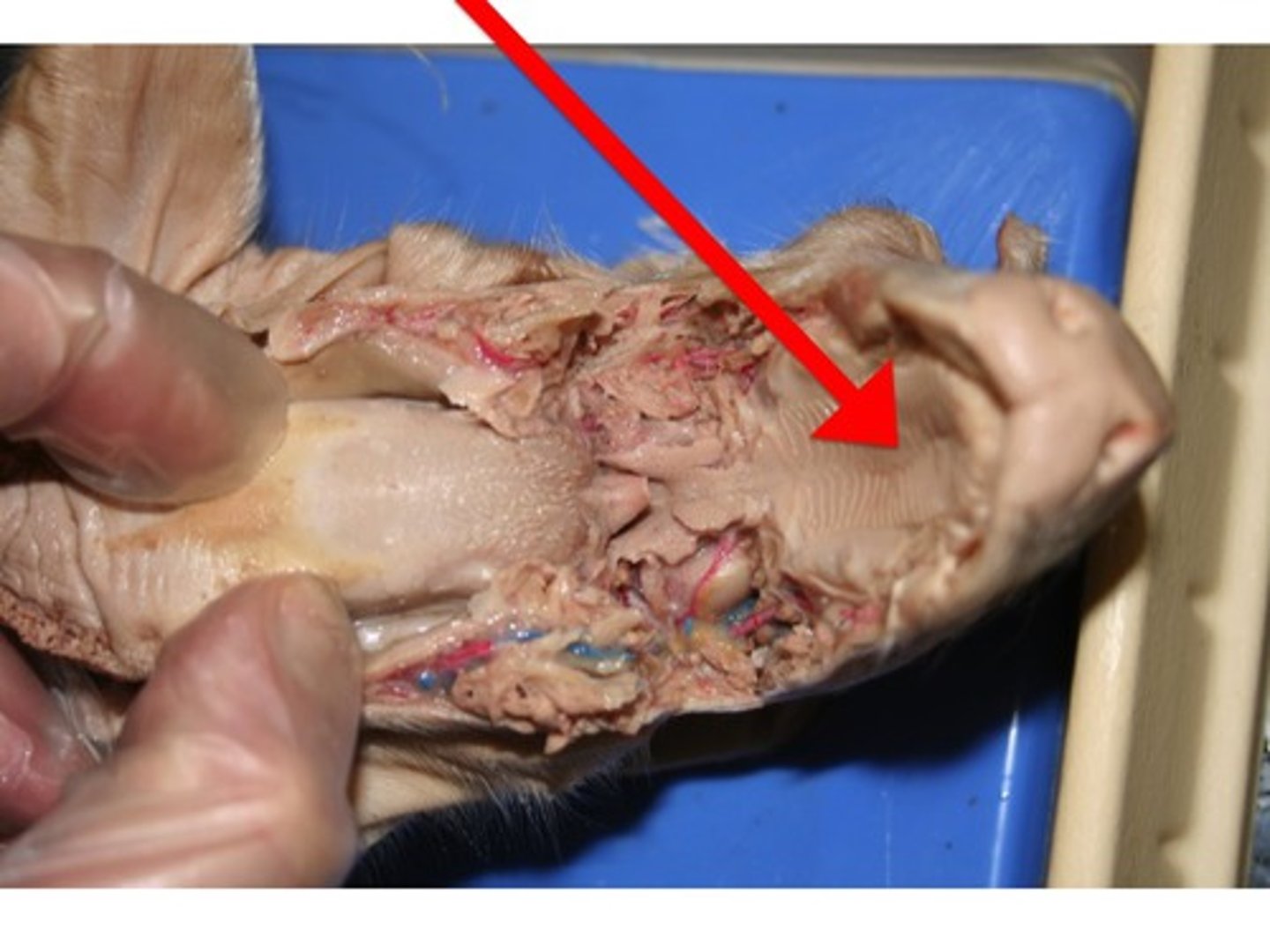
Trachea
Allows air to pass to and from lungs
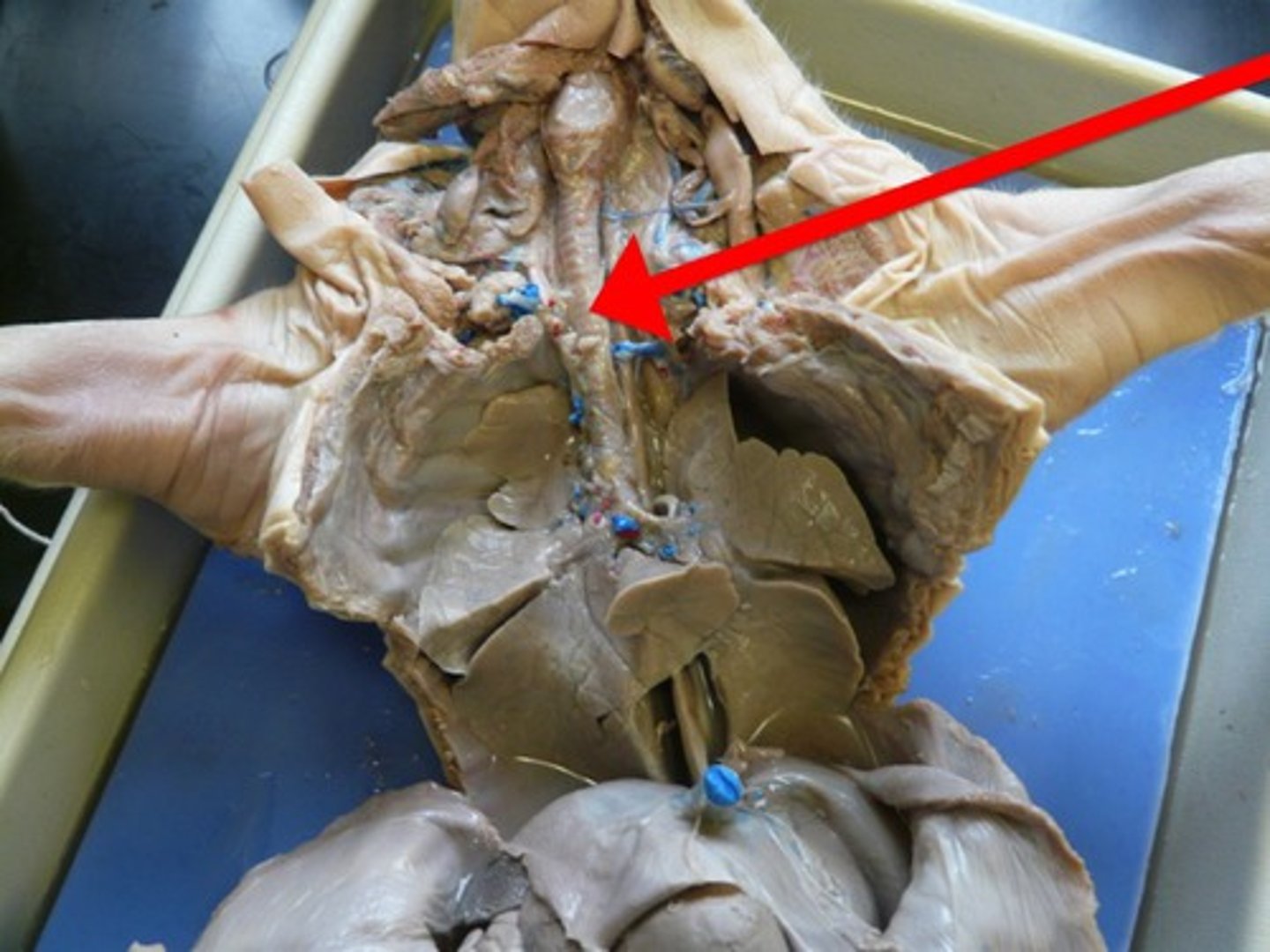
Larynx
voice box
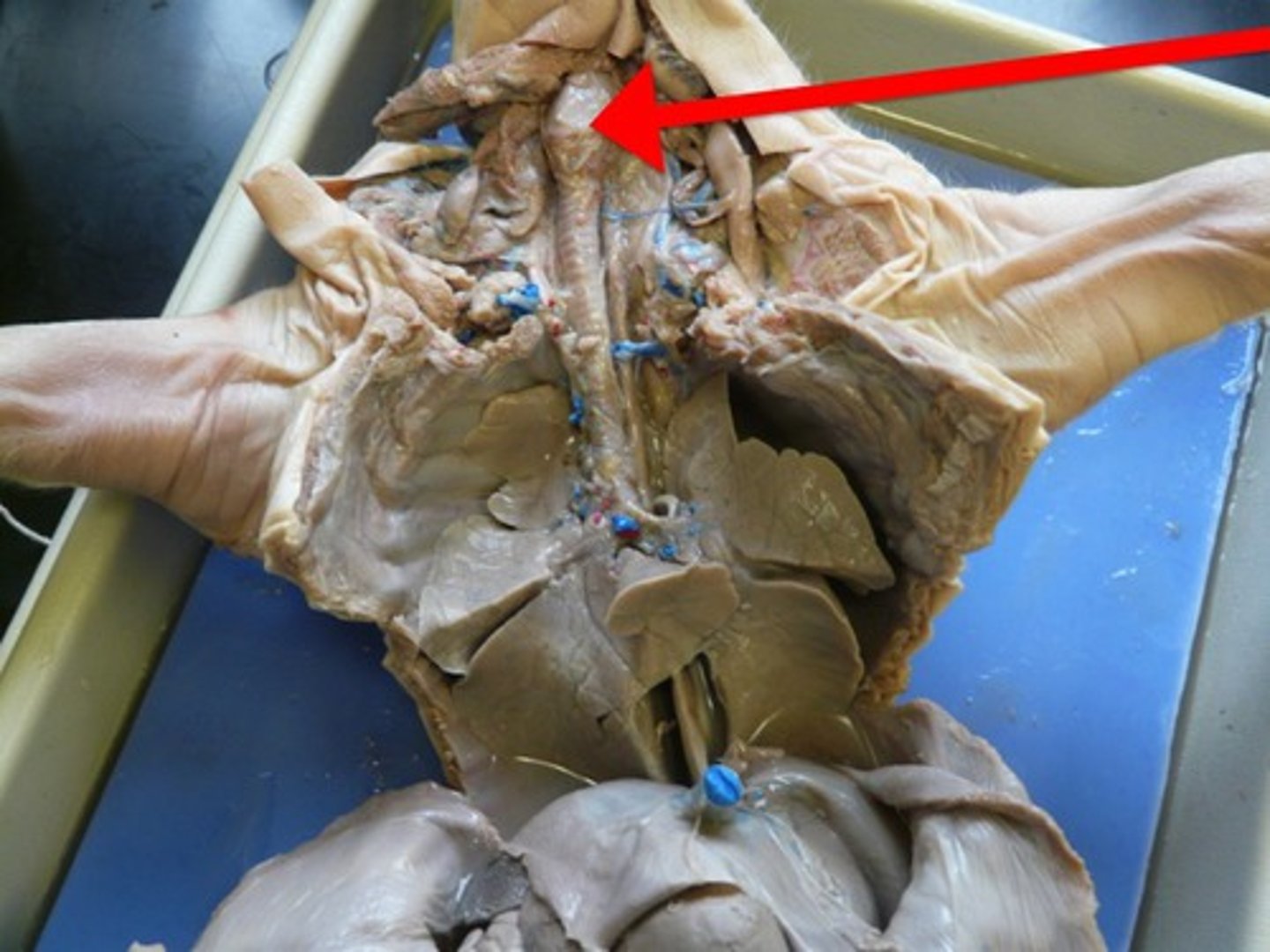
Scrotum
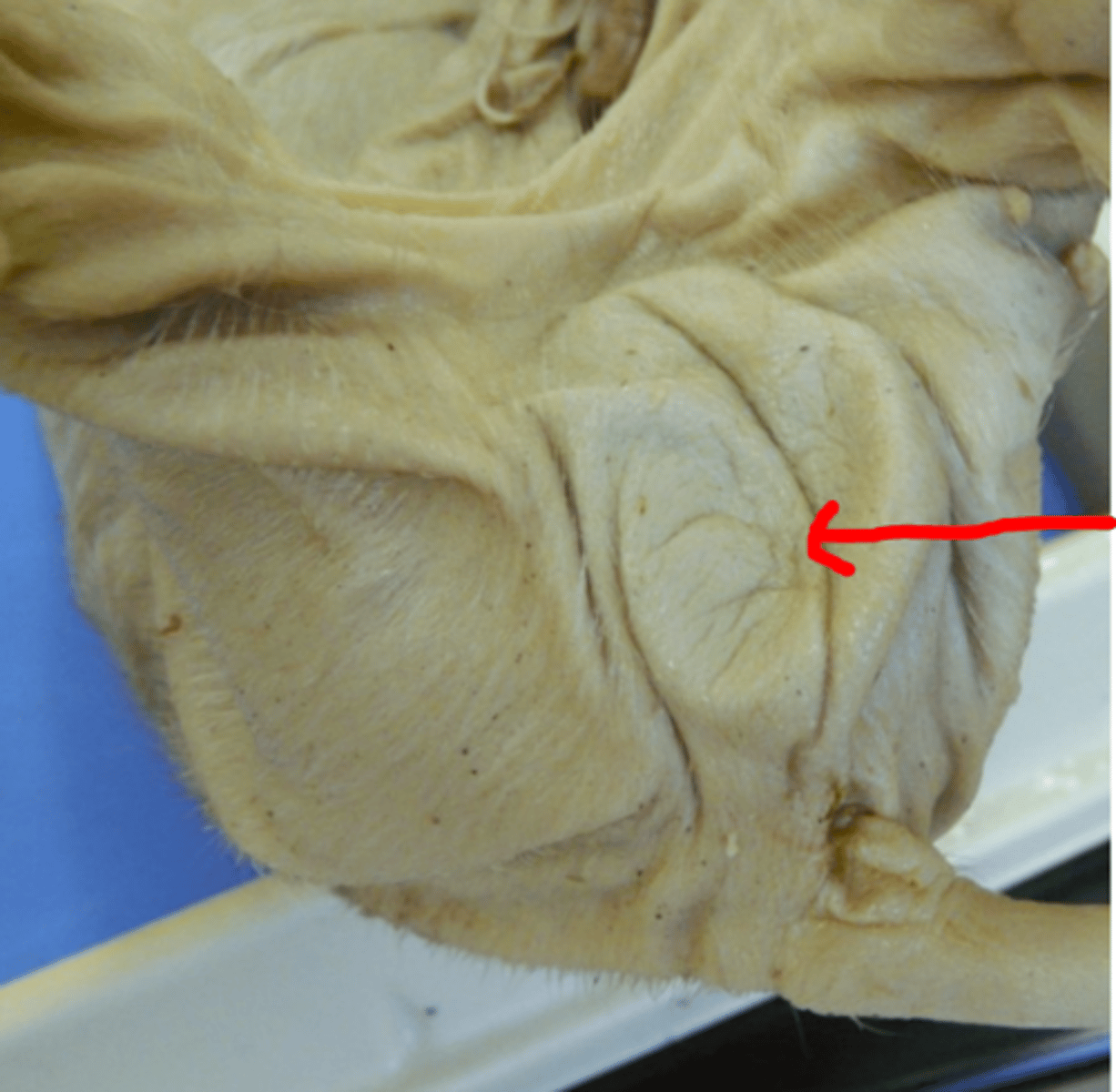
Umbilical cord
a tube containing the blood vessels connecting the fetus and placenta
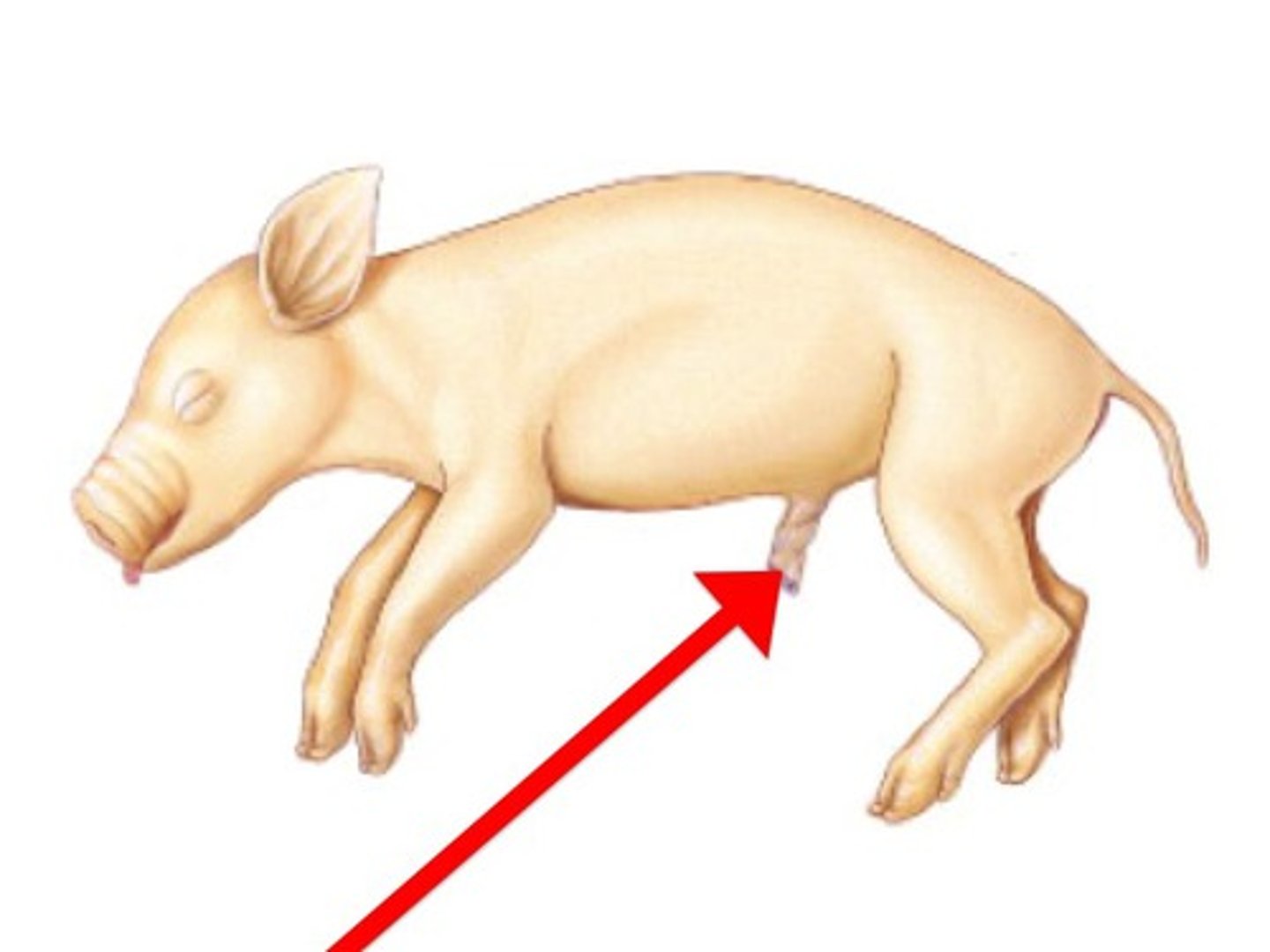
Urinary Bladder
stores urine
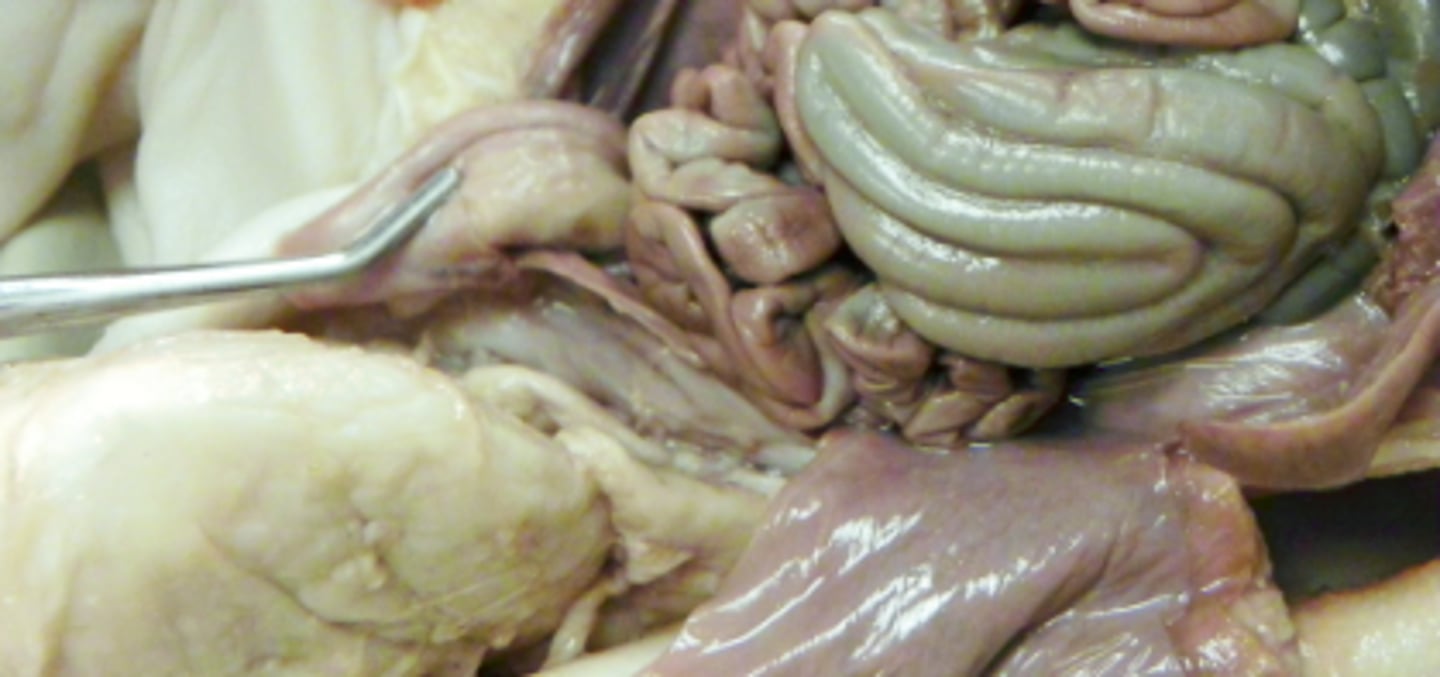
Kidney
Filters waste from the blood like urea, water, salt and proteins.
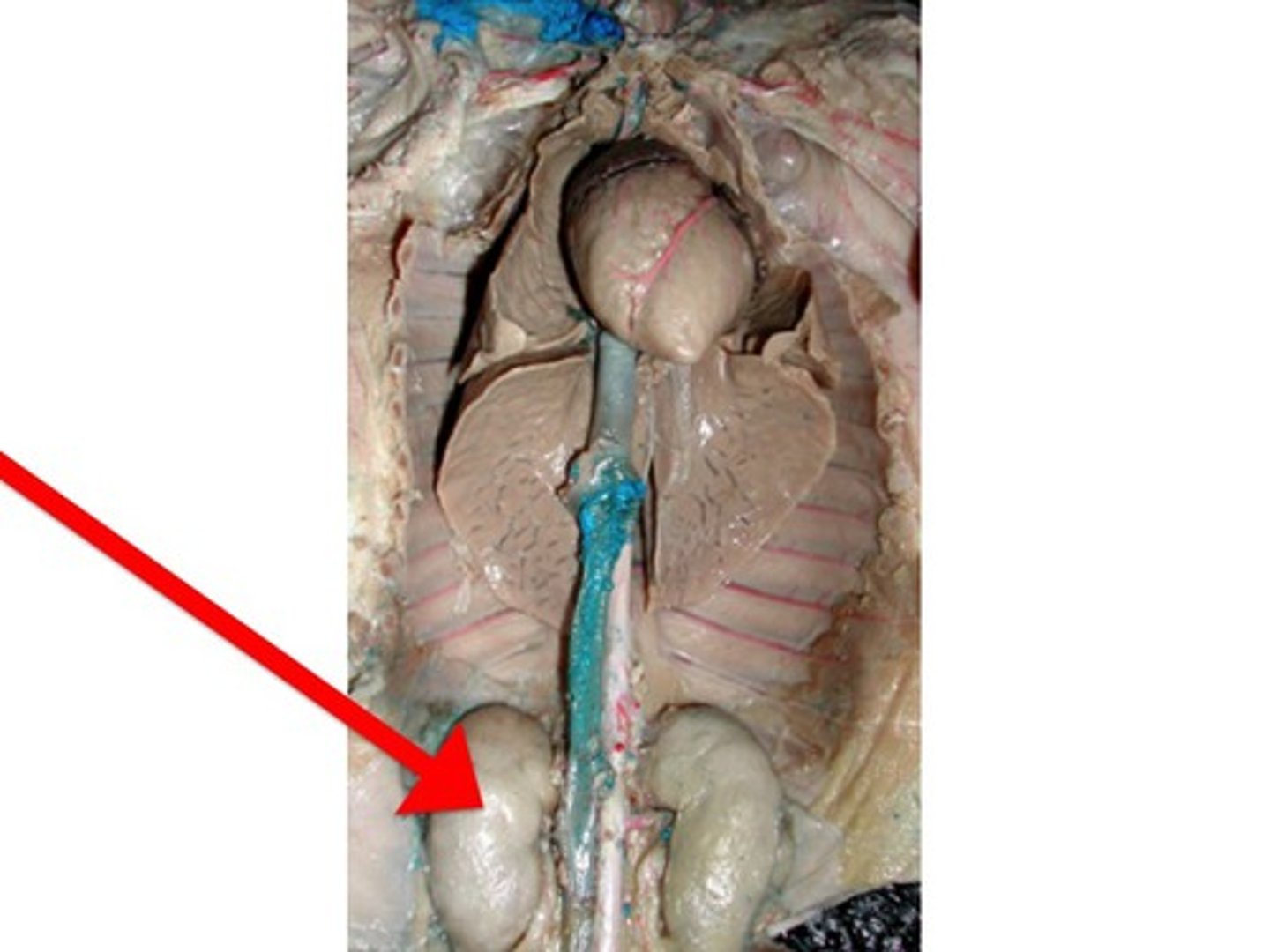
Large Intestine
Absorbs water and forms feces
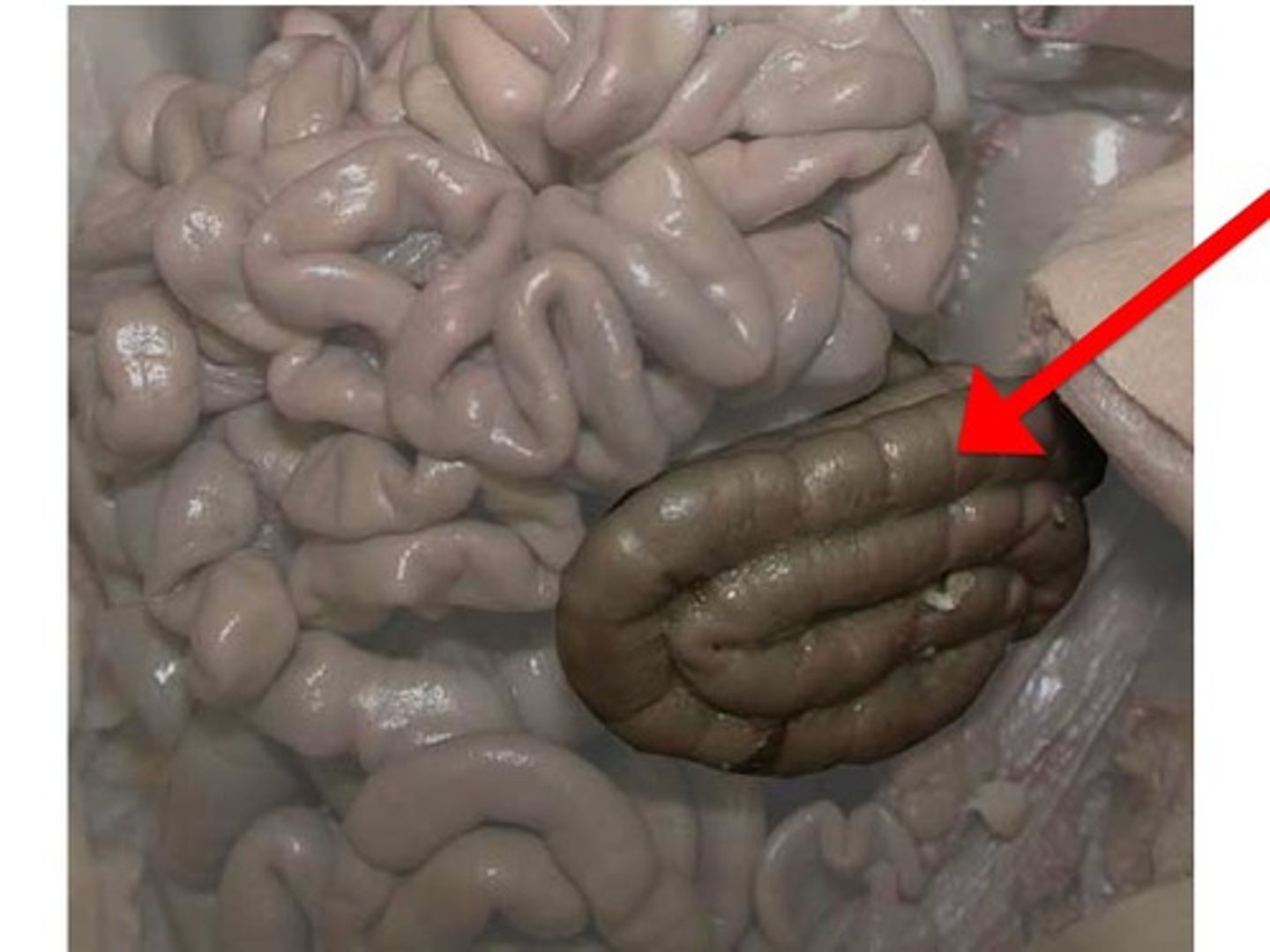
Rectum
stores feces
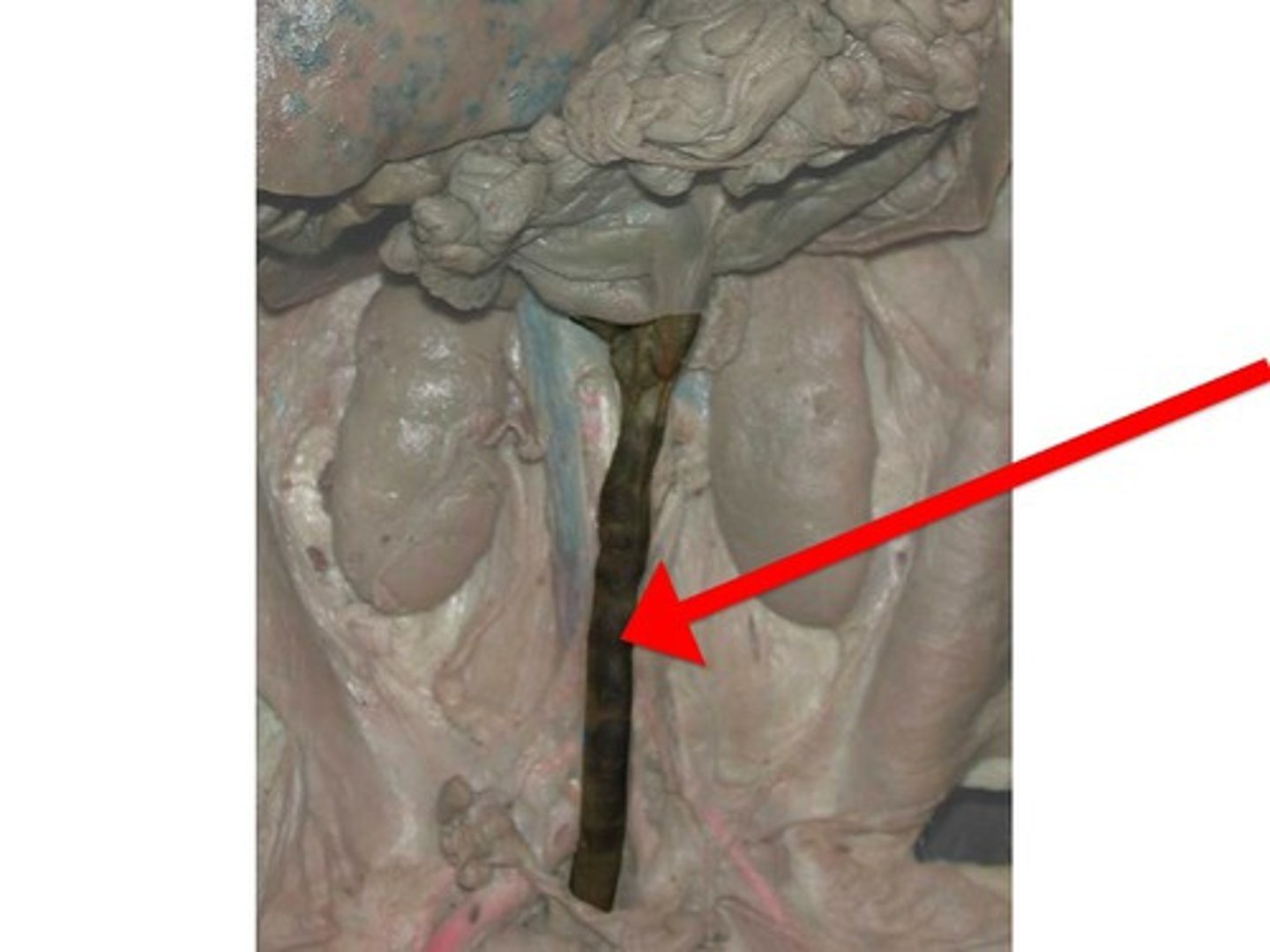
Ureter
A duct leading from the kidney to the urinary bladder.
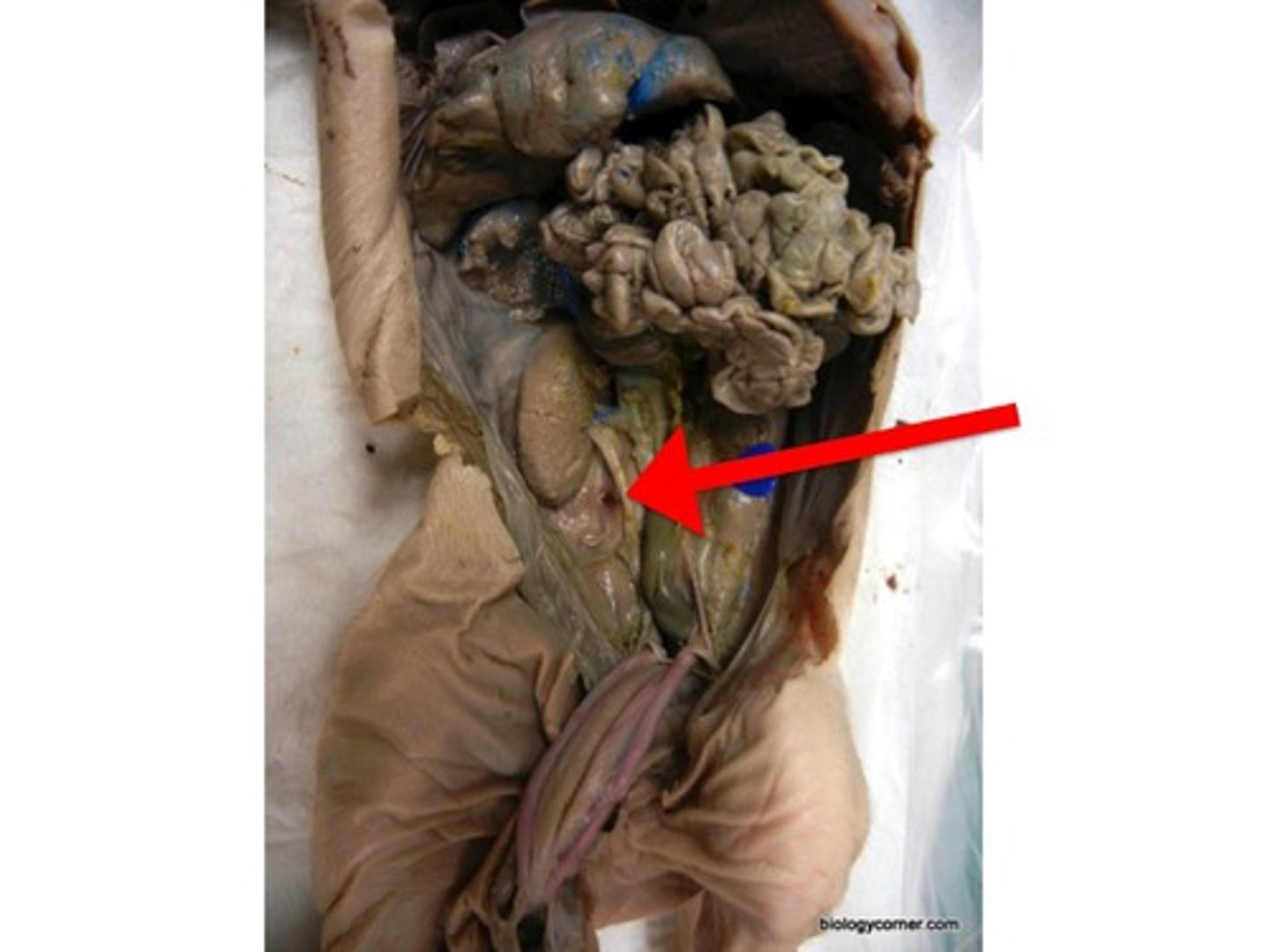
Tongue
A
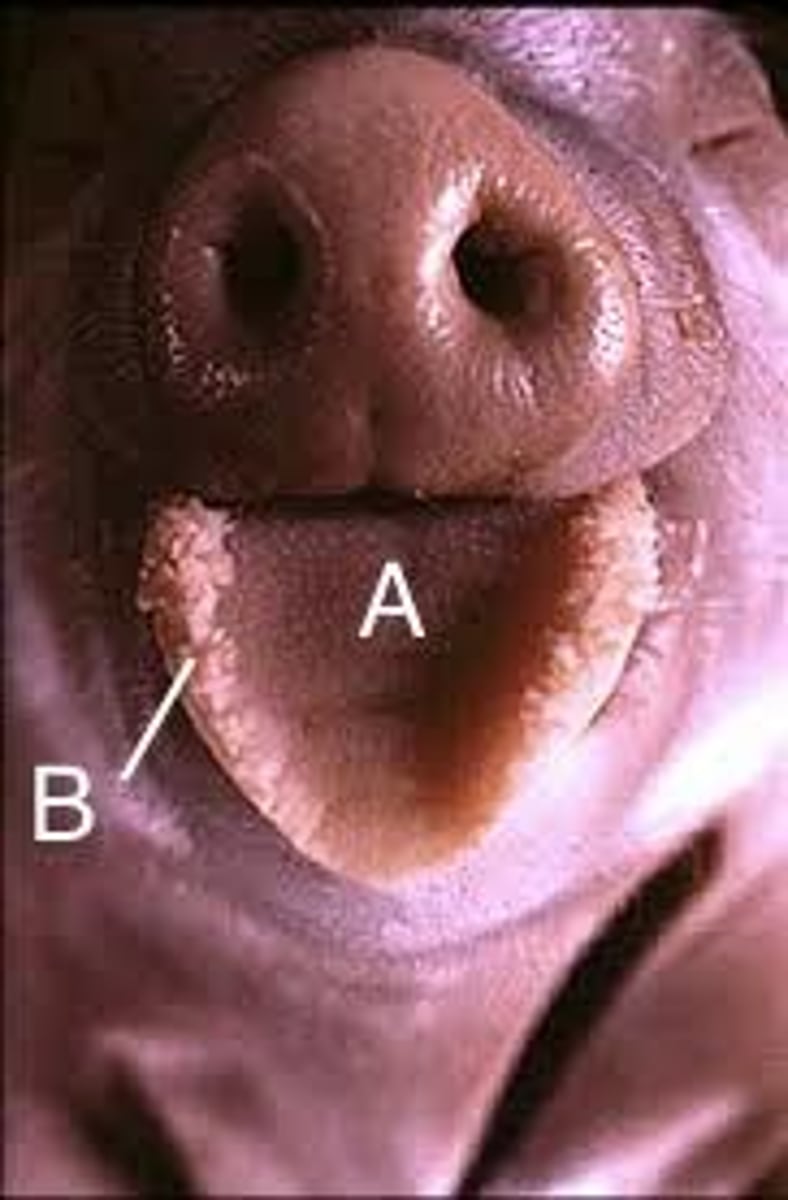
Sensory Papillae
B
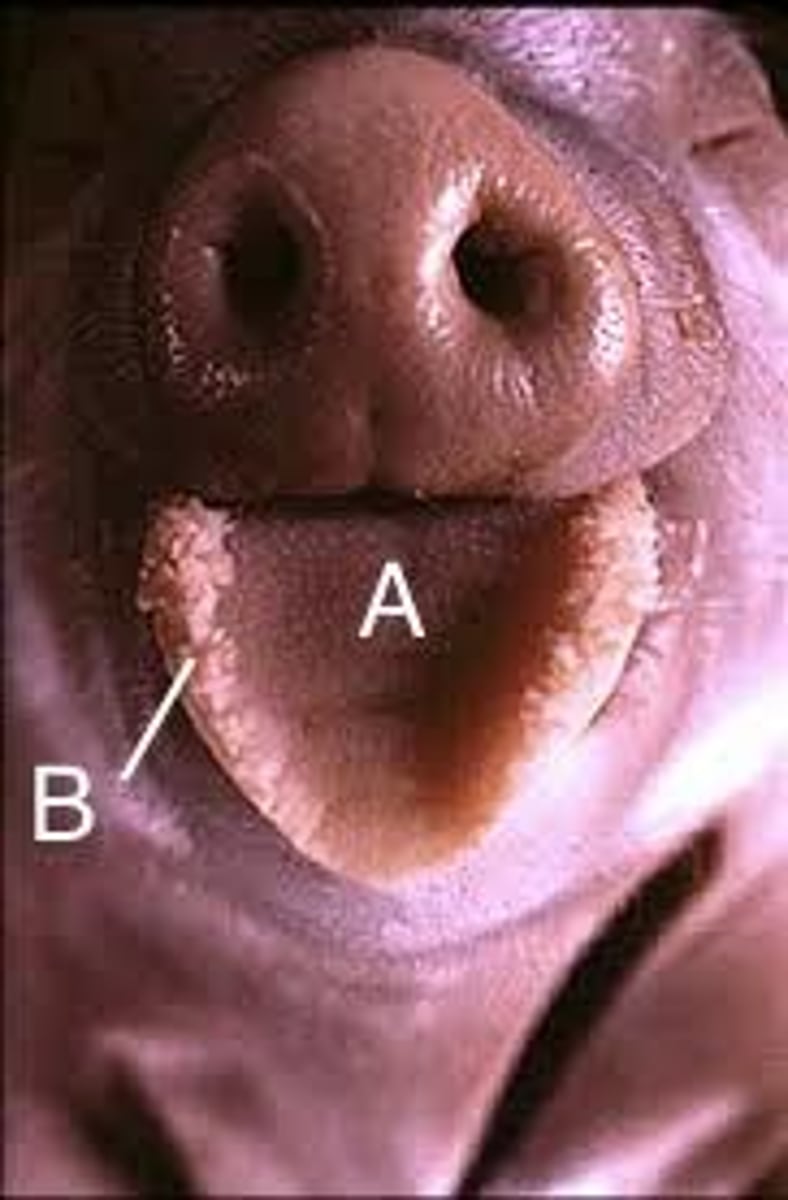
Pharynx
Highlighted yellow
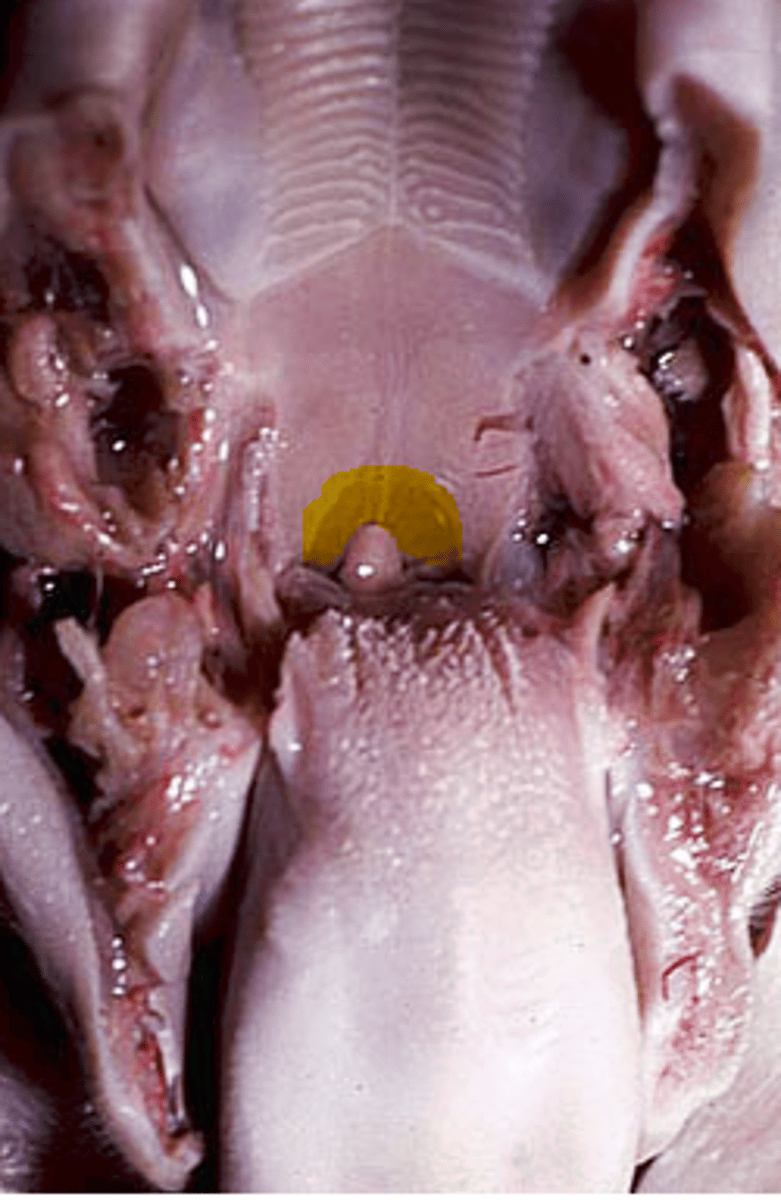
Esophagus
Digestive System; A muscular tube that connects the mouth to the stomach.
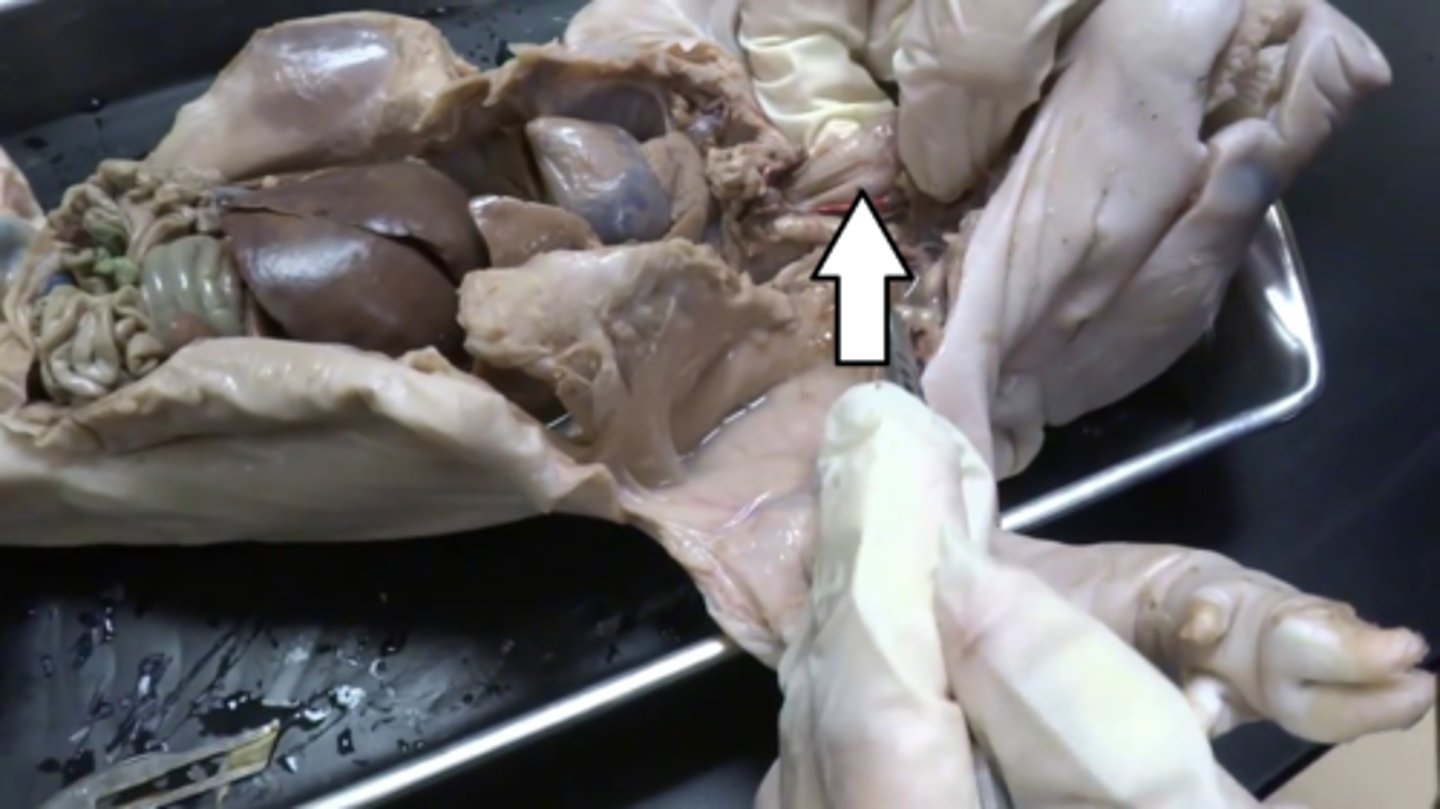
Aorta
The large artery that carries blood from the heart to the body
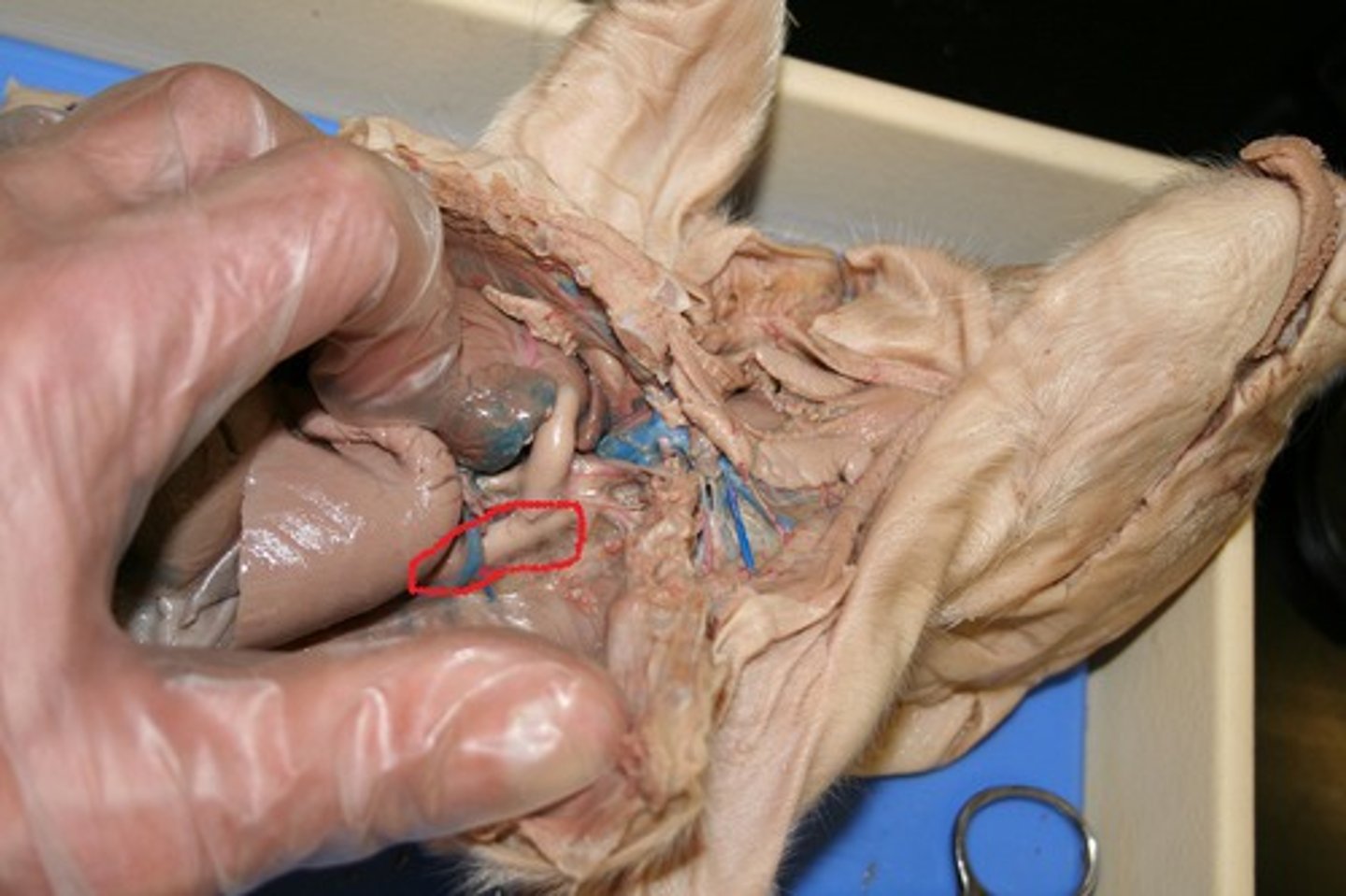
male pig
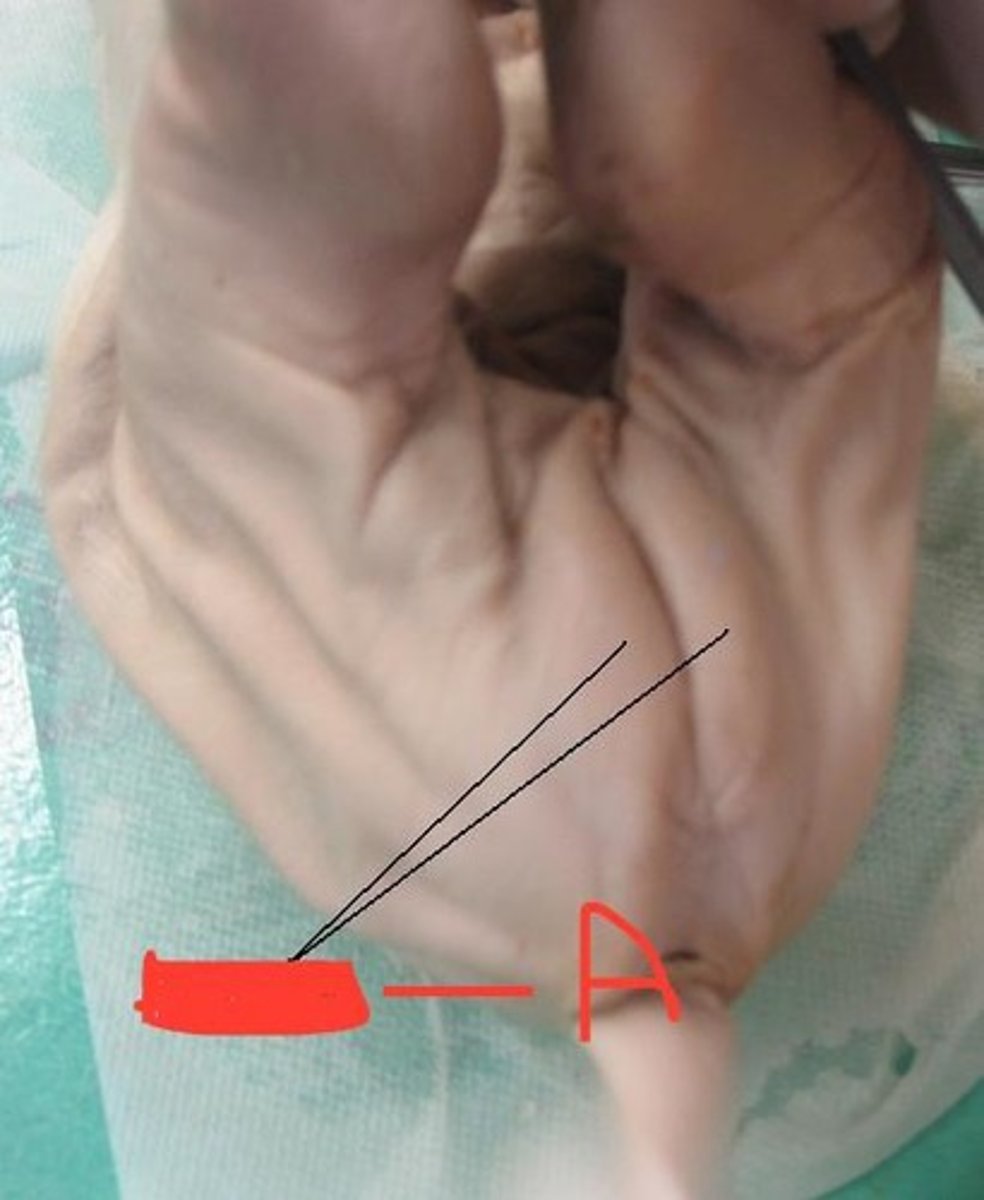
female pig
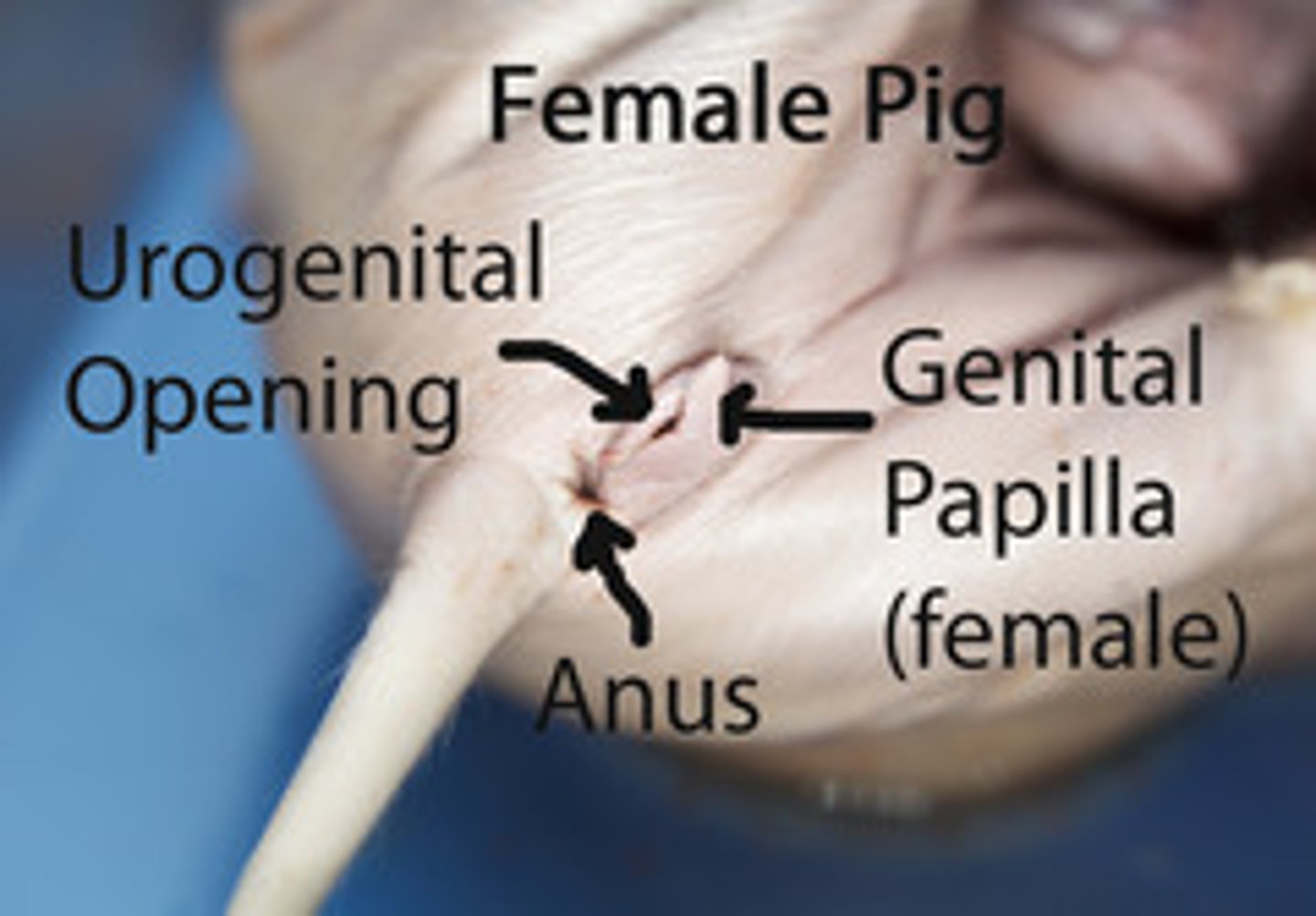
nares
nostrils
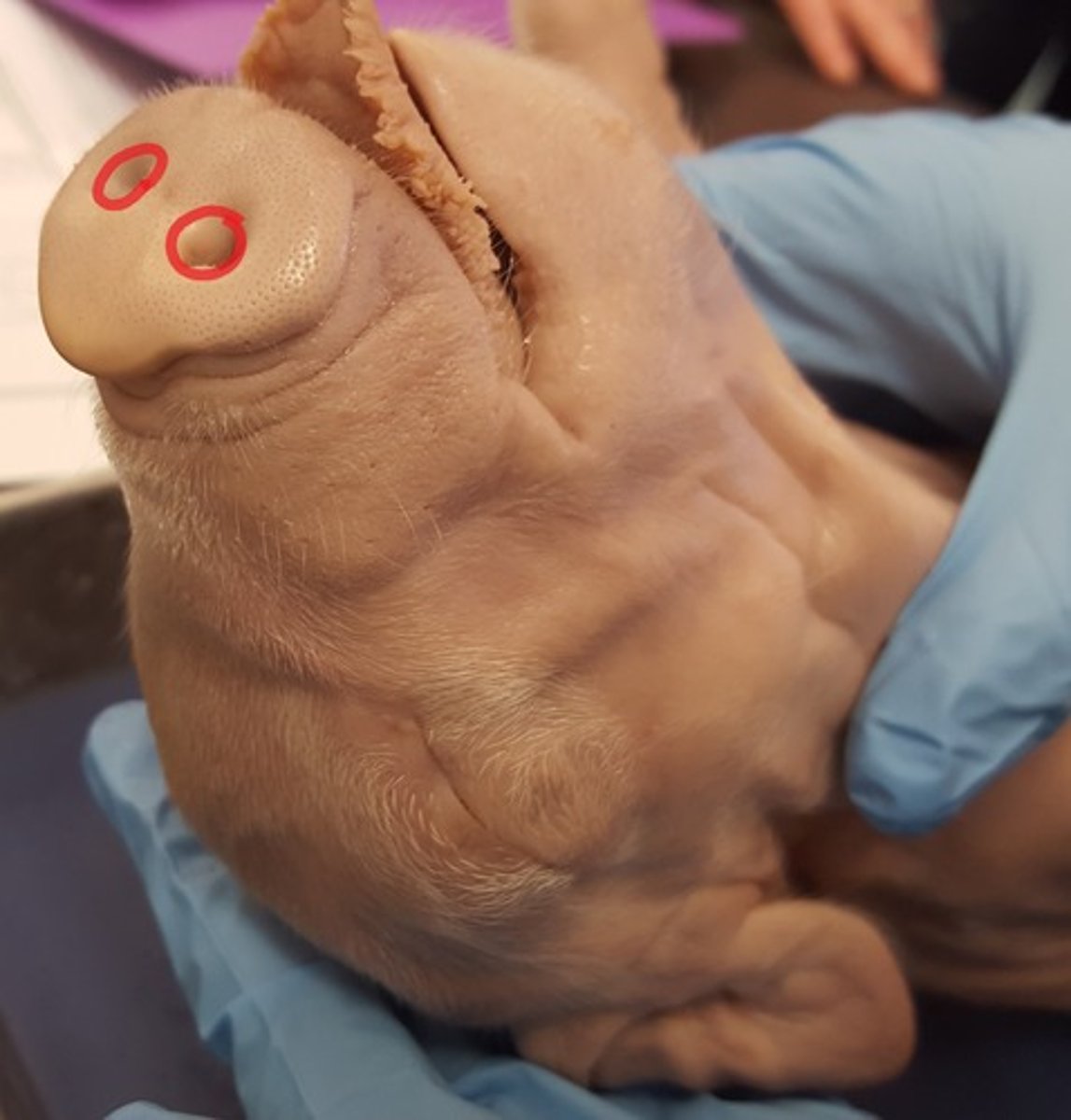
parotid gland
largest salivary gland
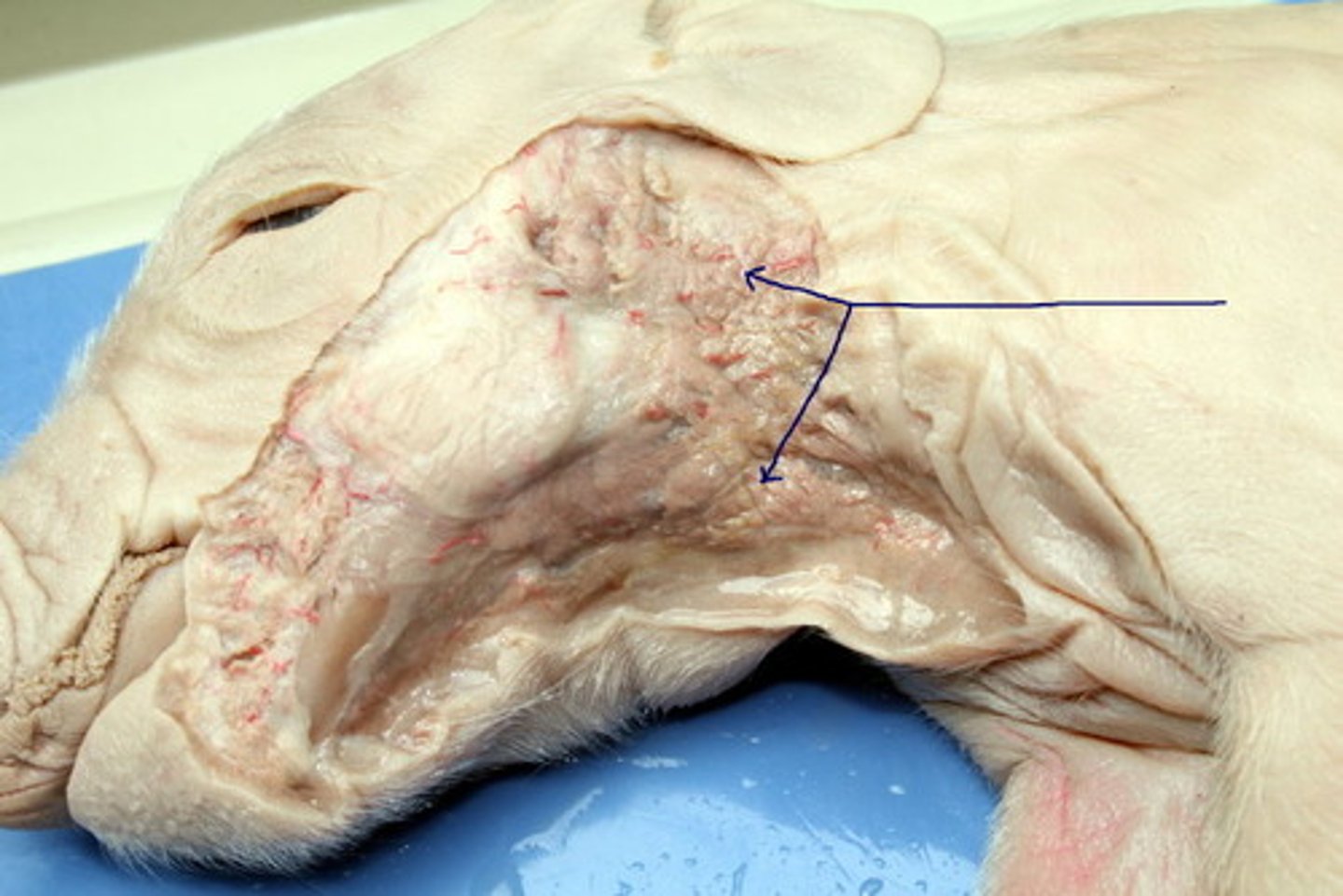
pulmonary artery
artery carrying oxygen-poor blood from the heart to the lungs
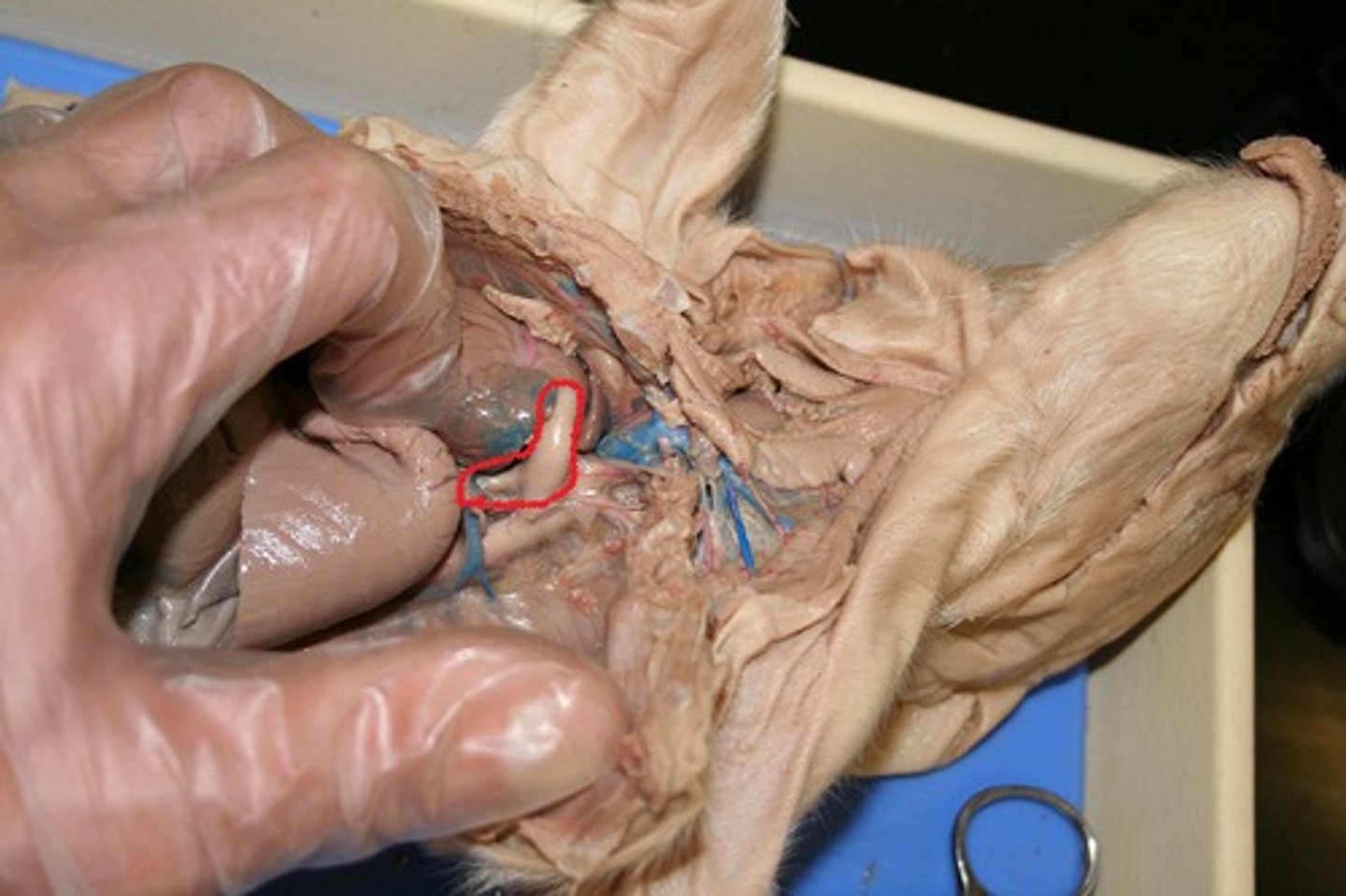
Pericardium
membranous sac enclosing the heart
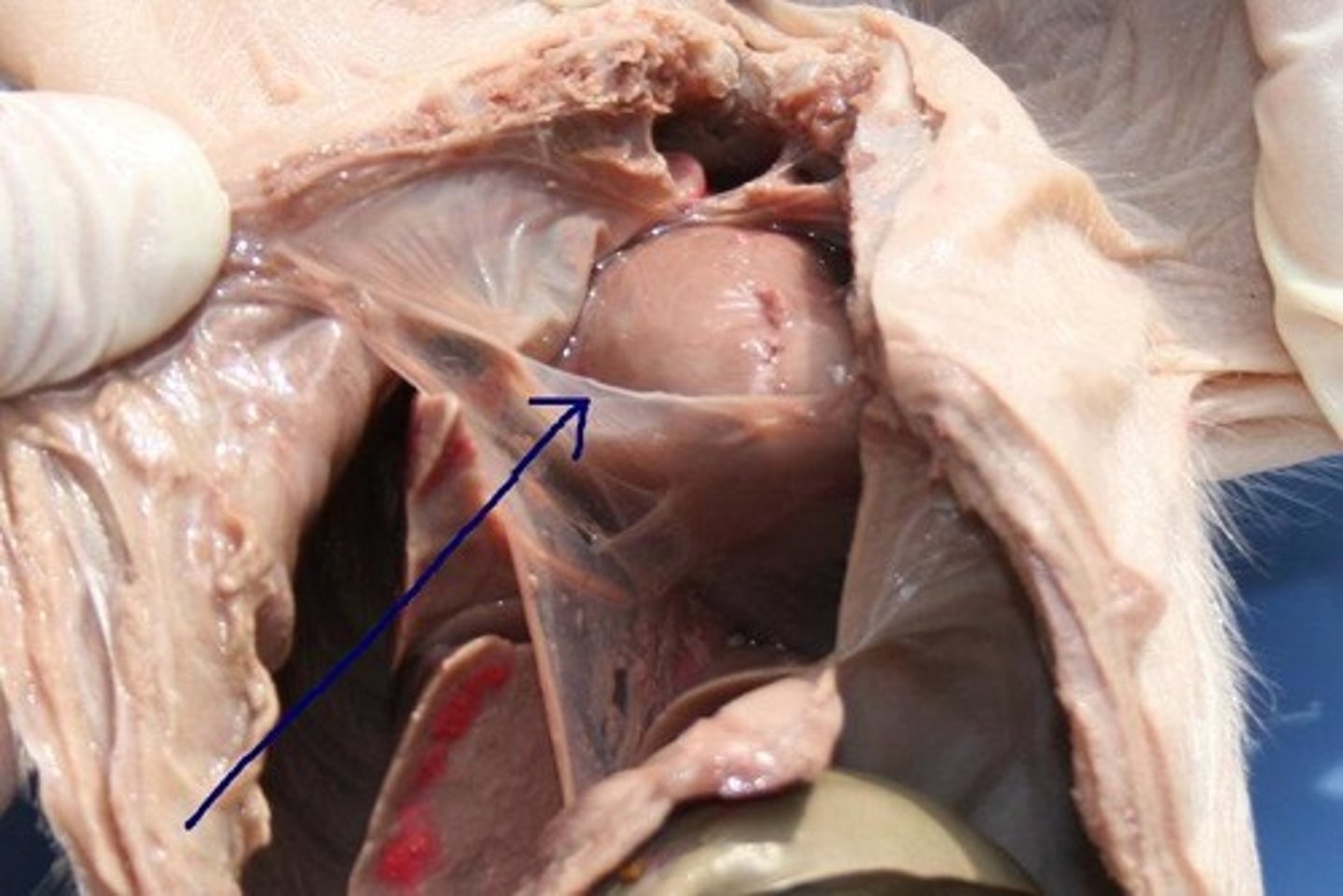
pyloric sphincter
Controls passage of food from stomach to small intestine
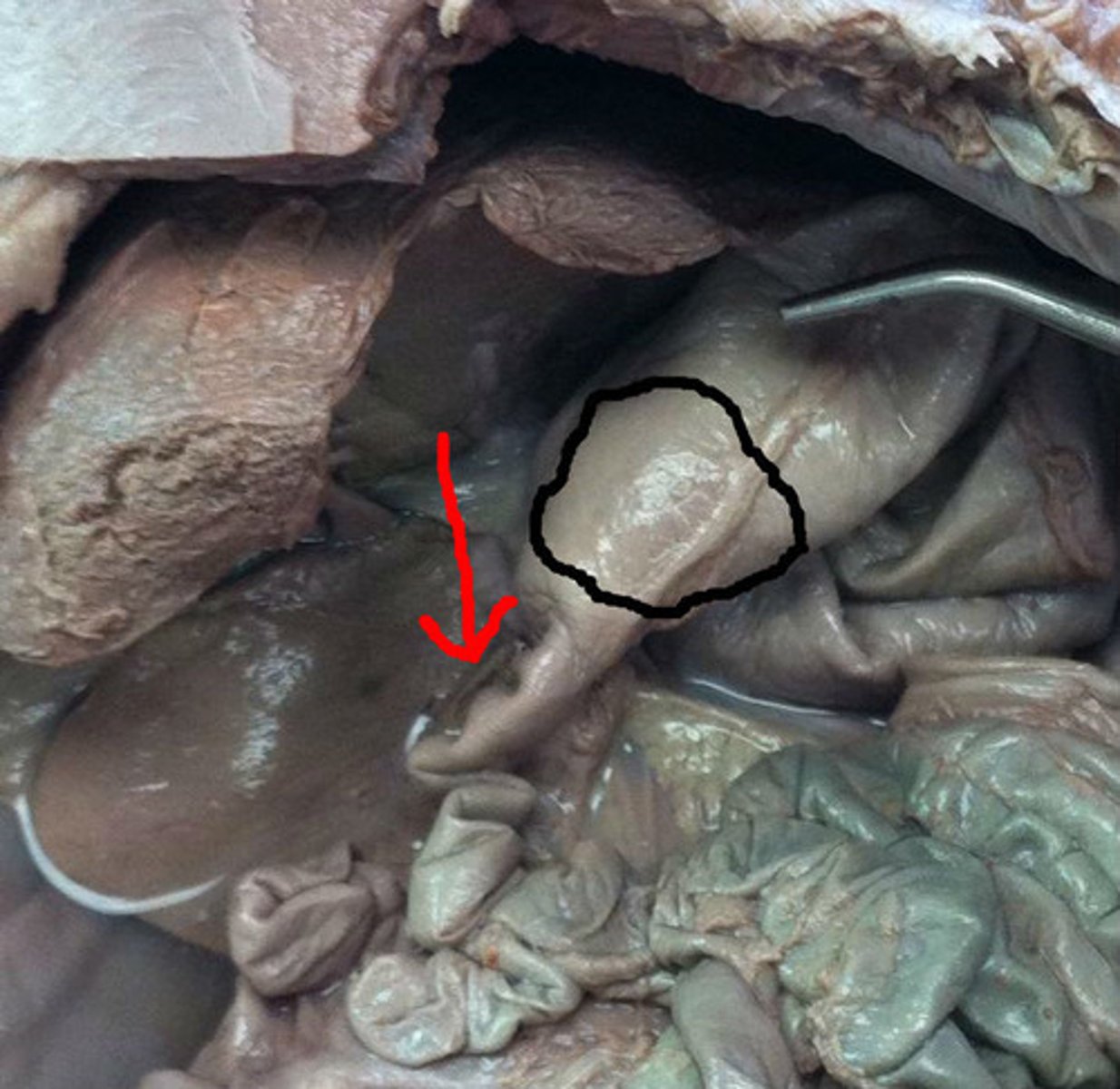
cardiac sphincter
opening from the esophagus to the stomach
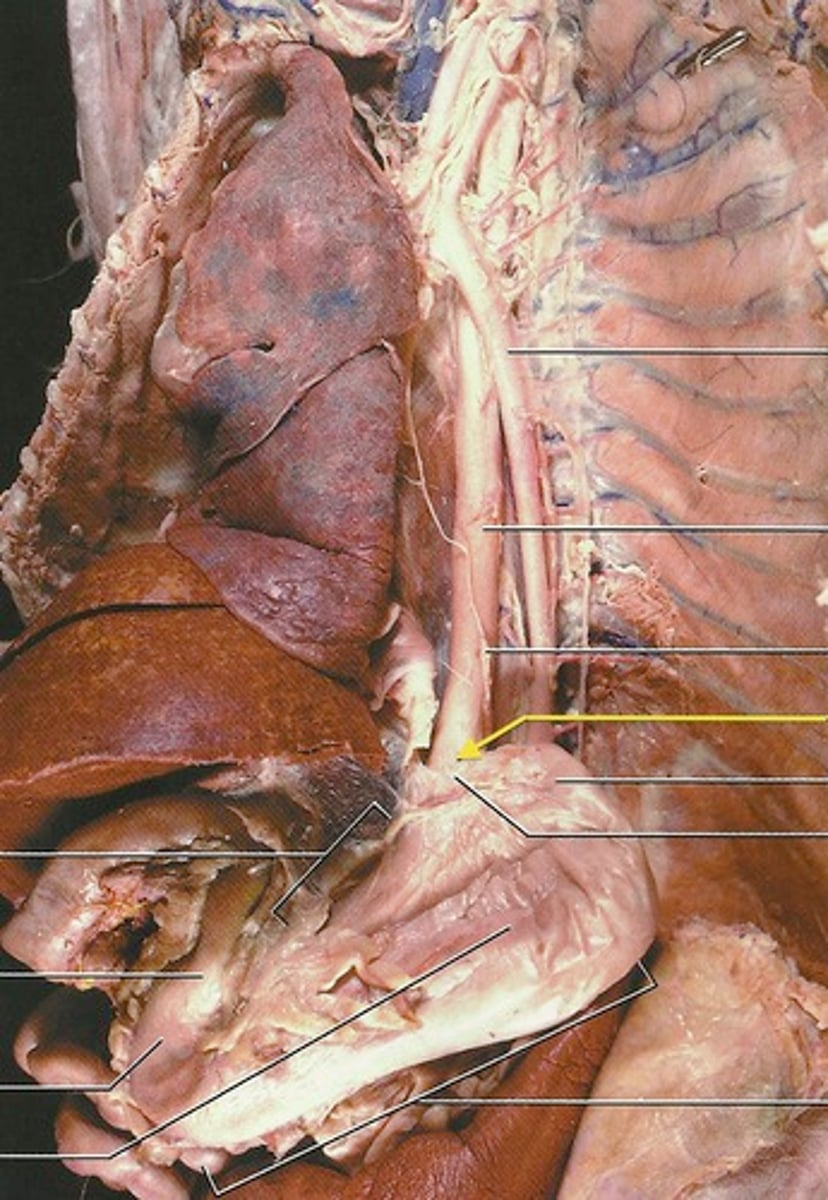
rugae of stomach
Anatomy: series of ridges produced by the folding of the wall of the stomach
Function: allow the stomach to expand when needed
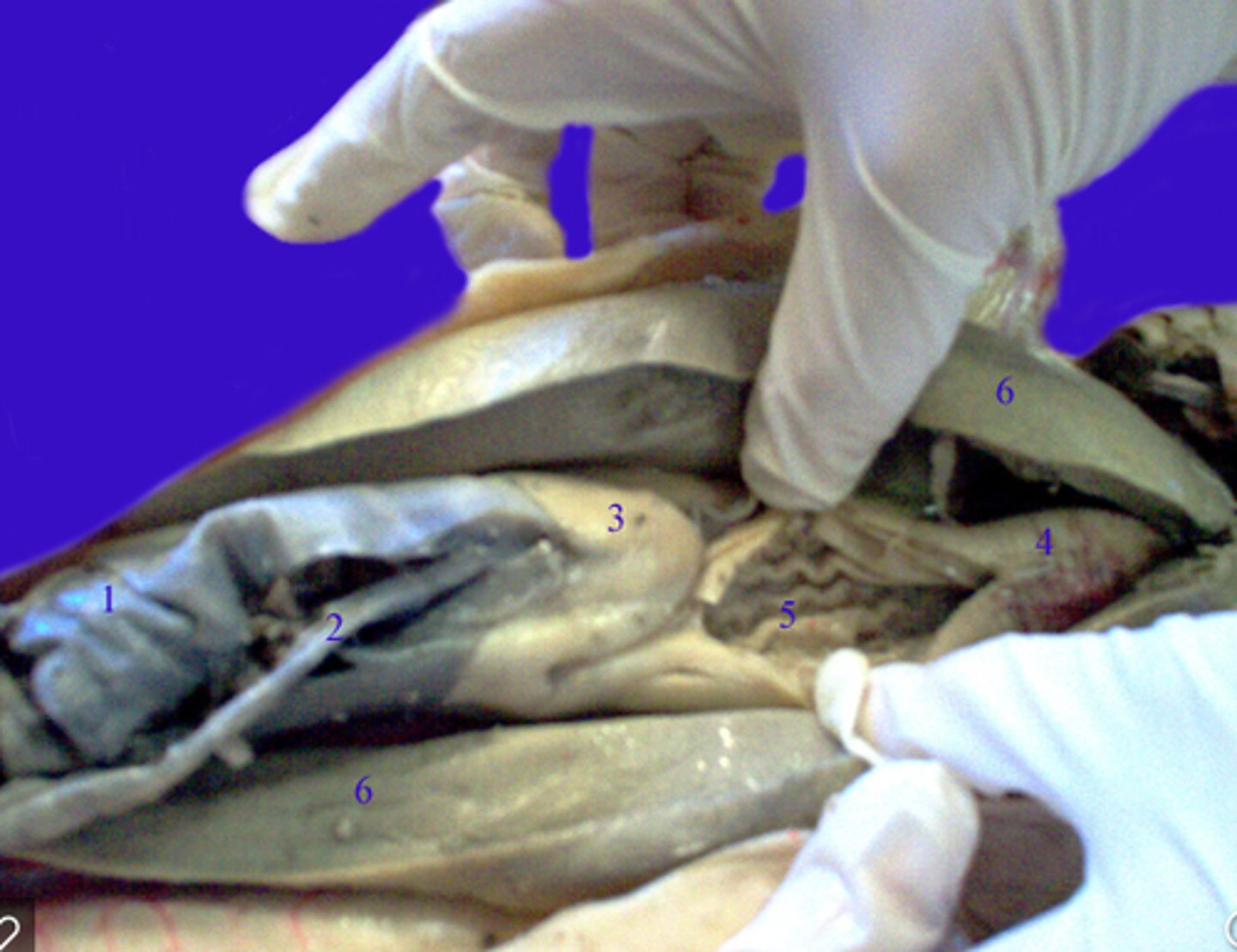
Dorsal
Top side back (think dorsal fin)
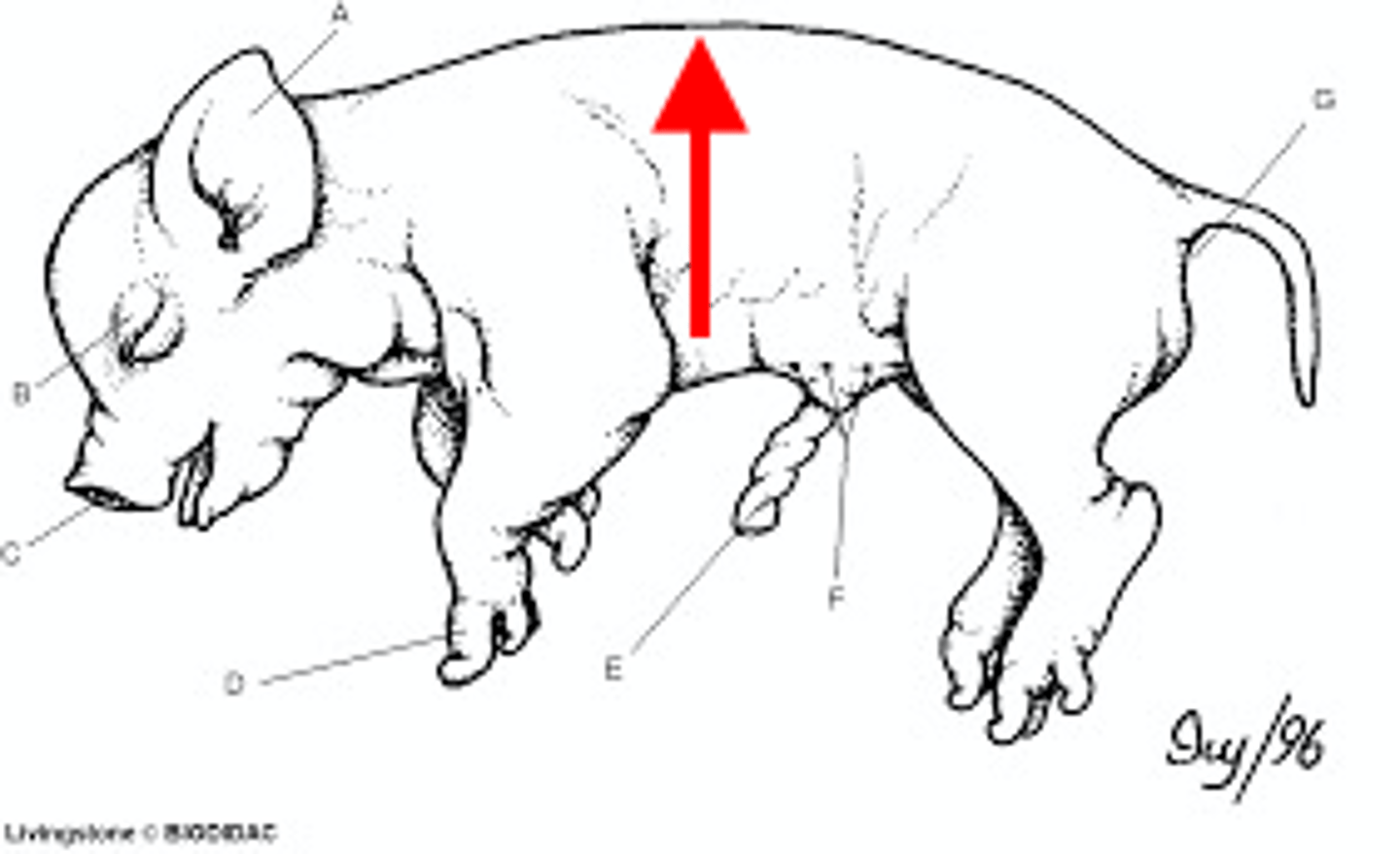
Ventral
belly side
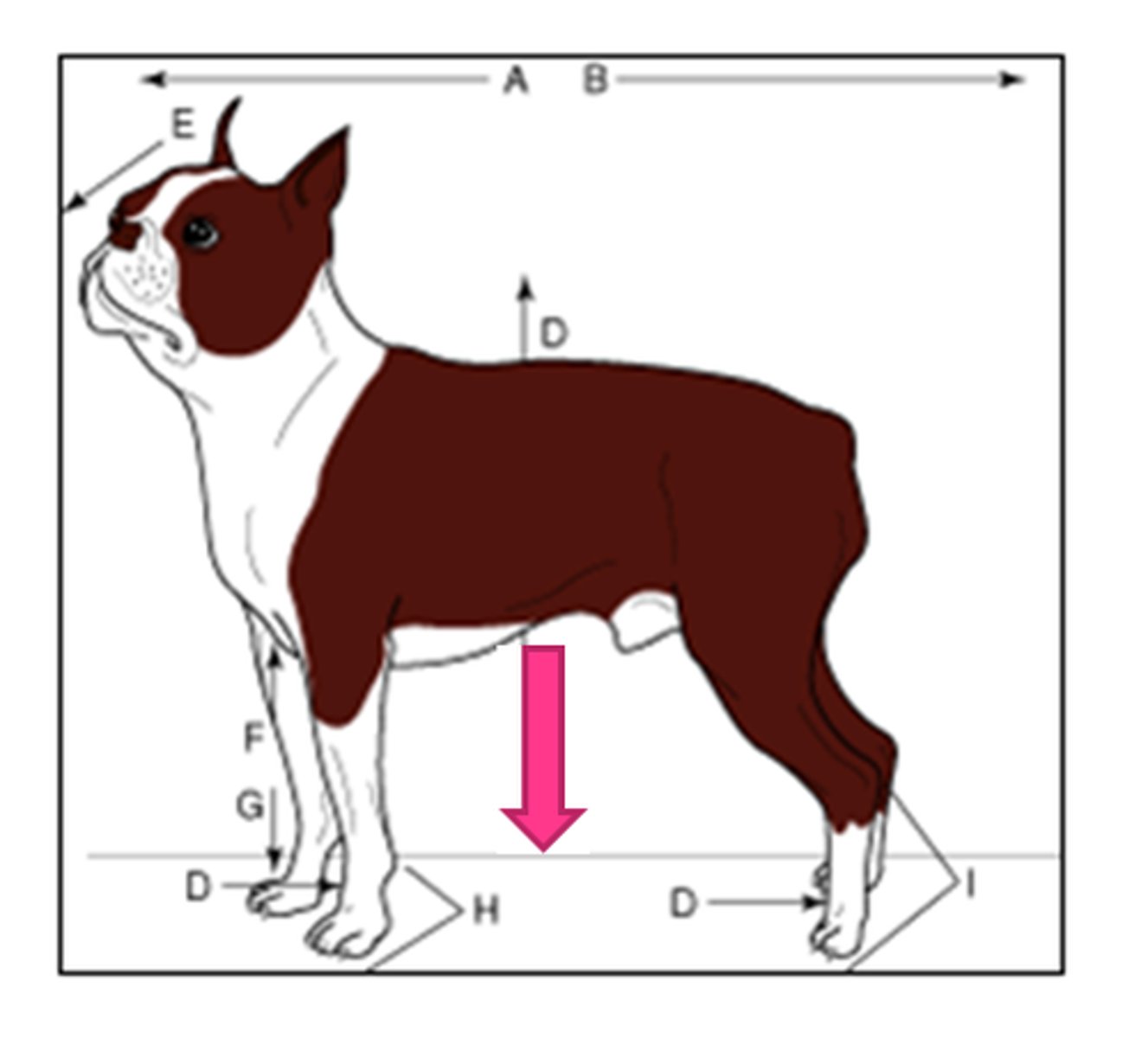
Anterior
toward the front
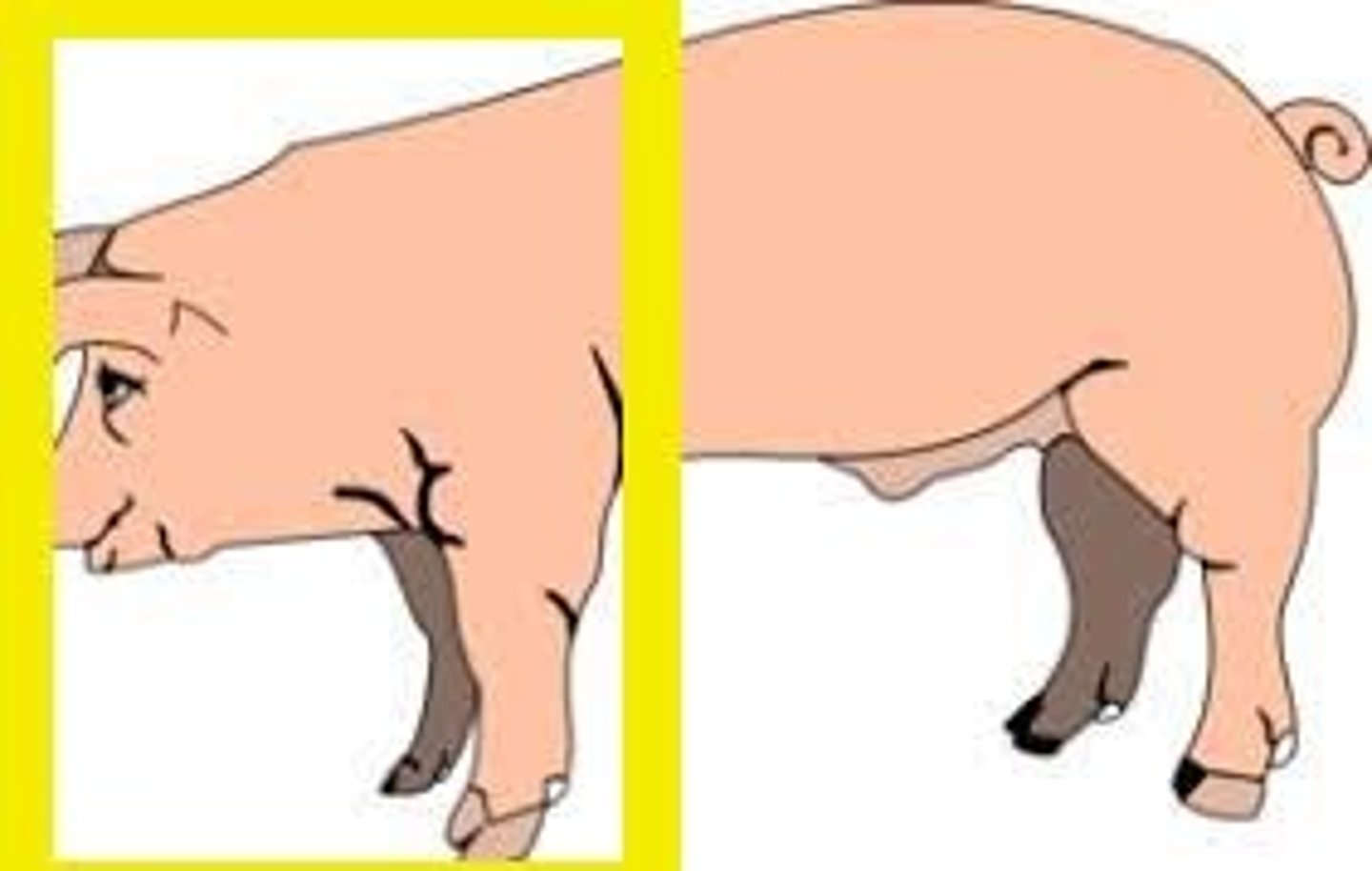
Cranial
toward the head
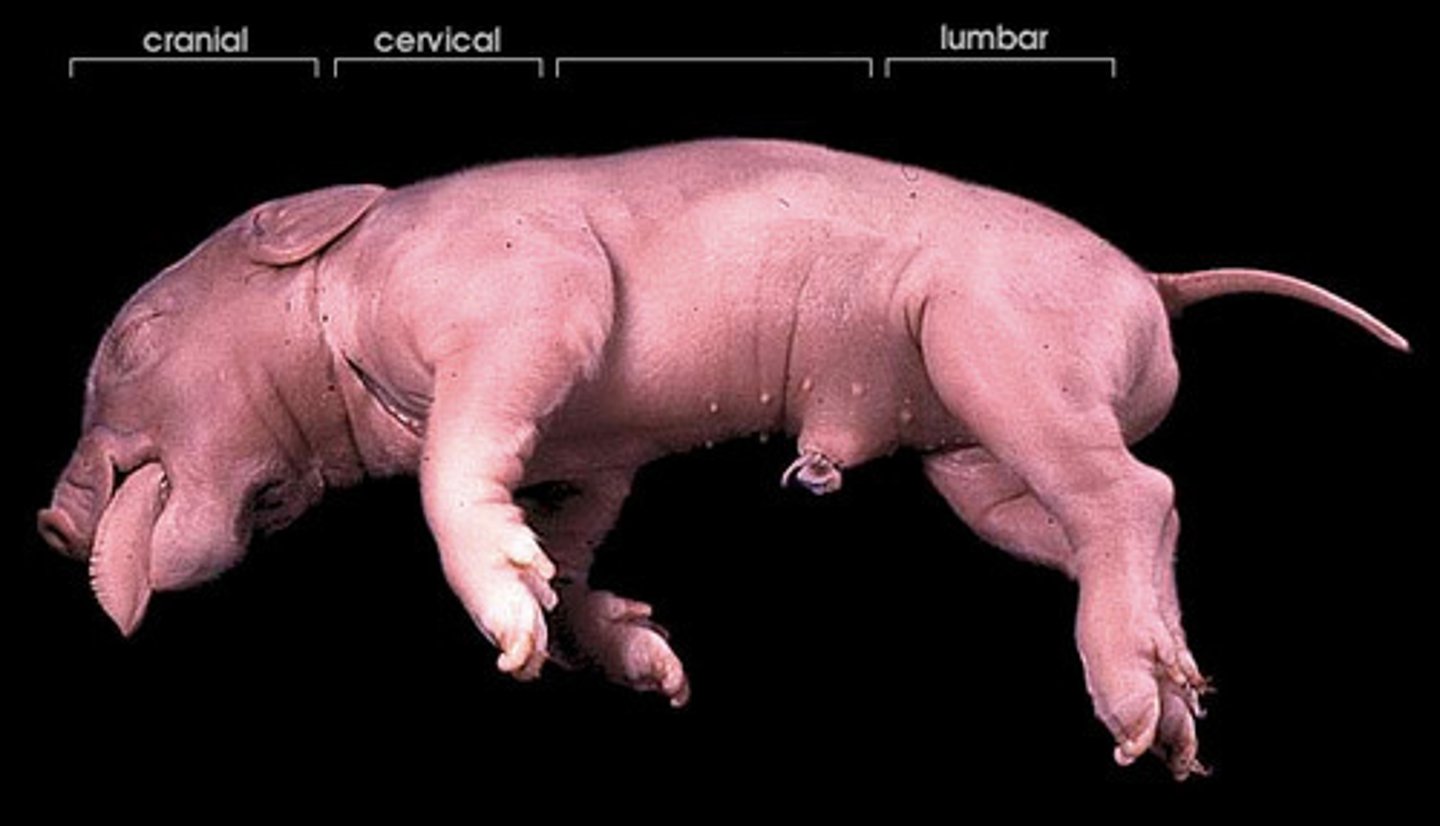
Posterior
back of body
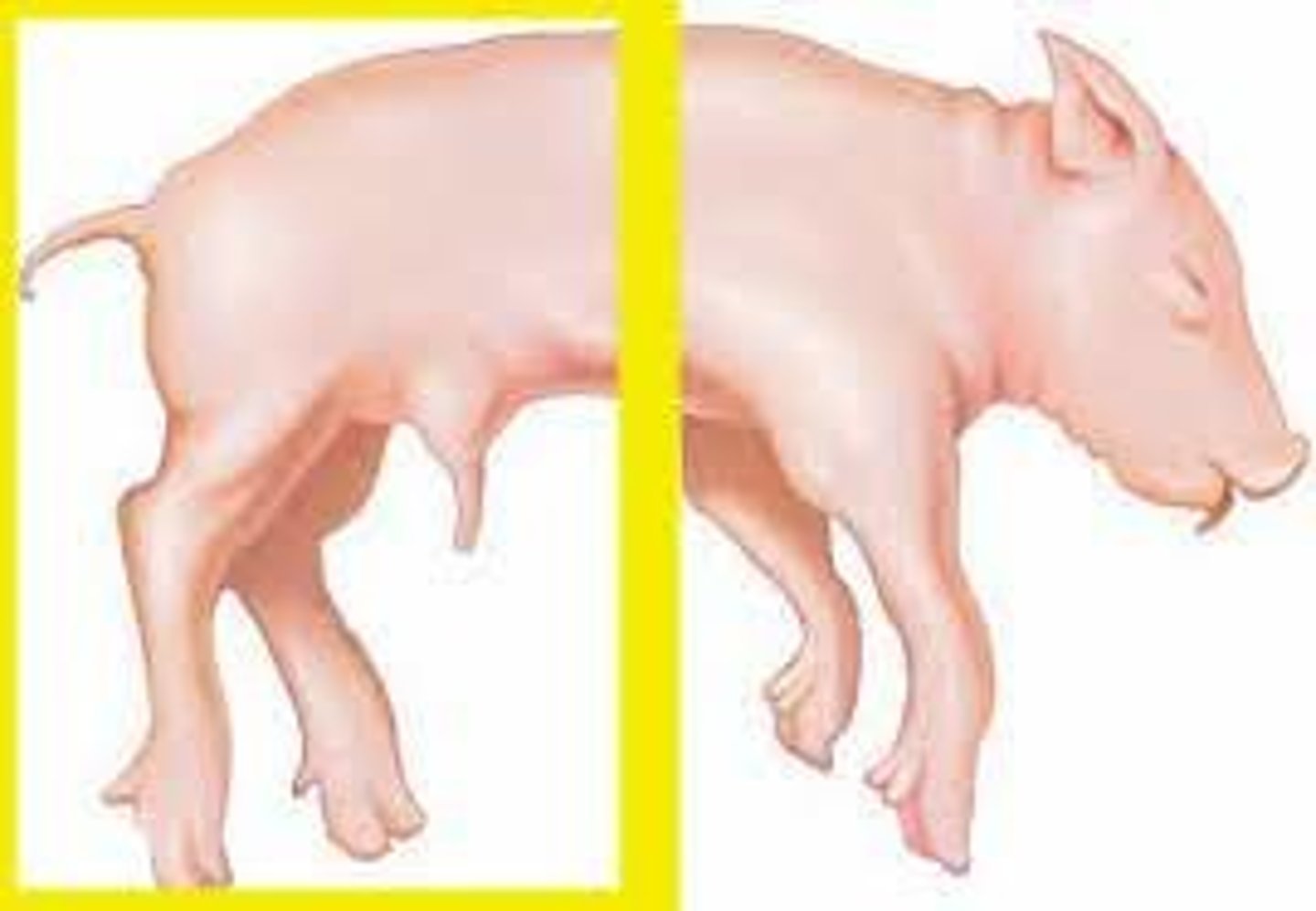
Caudal
toward the tail
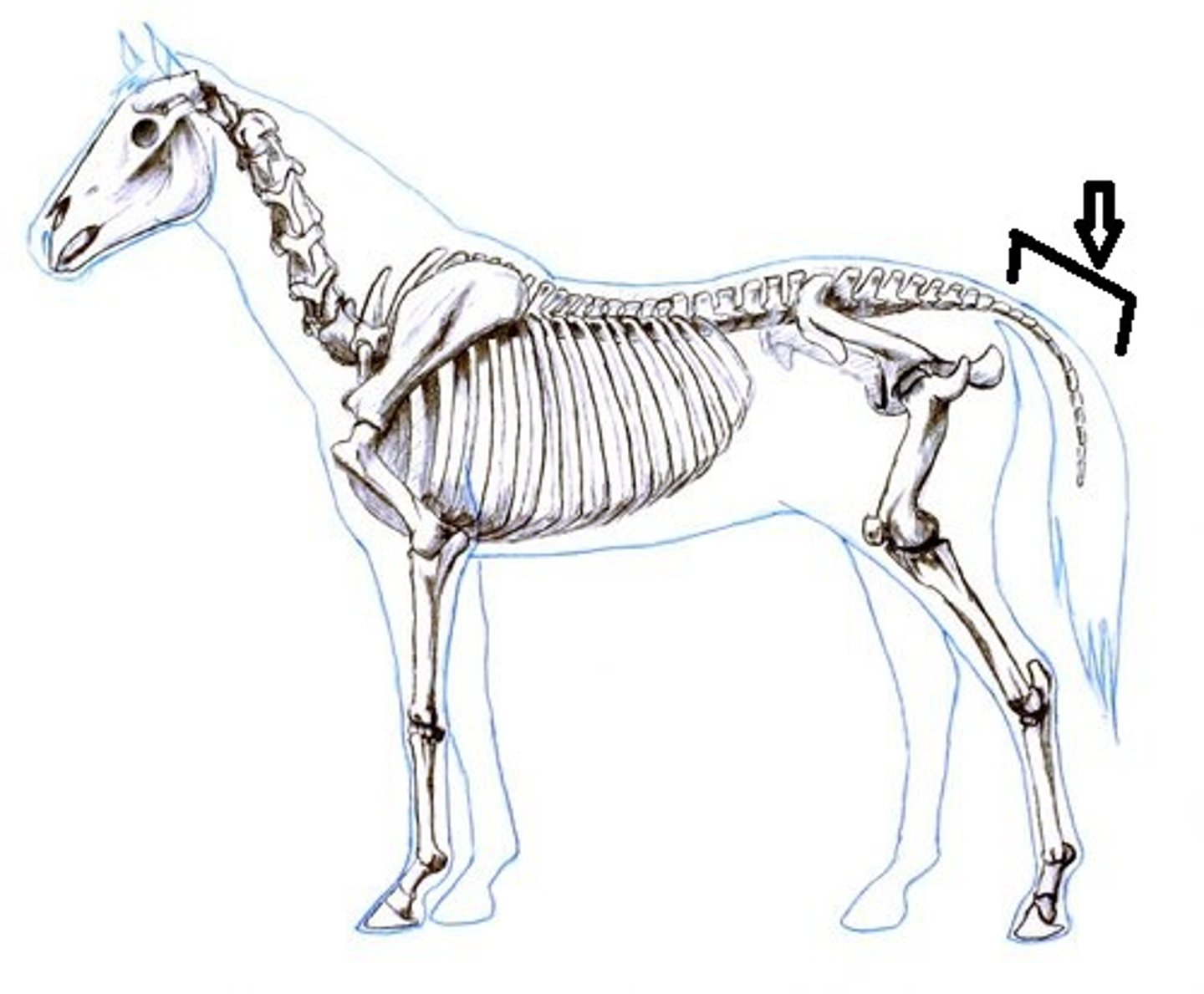
Medial
Toward the midline of the body
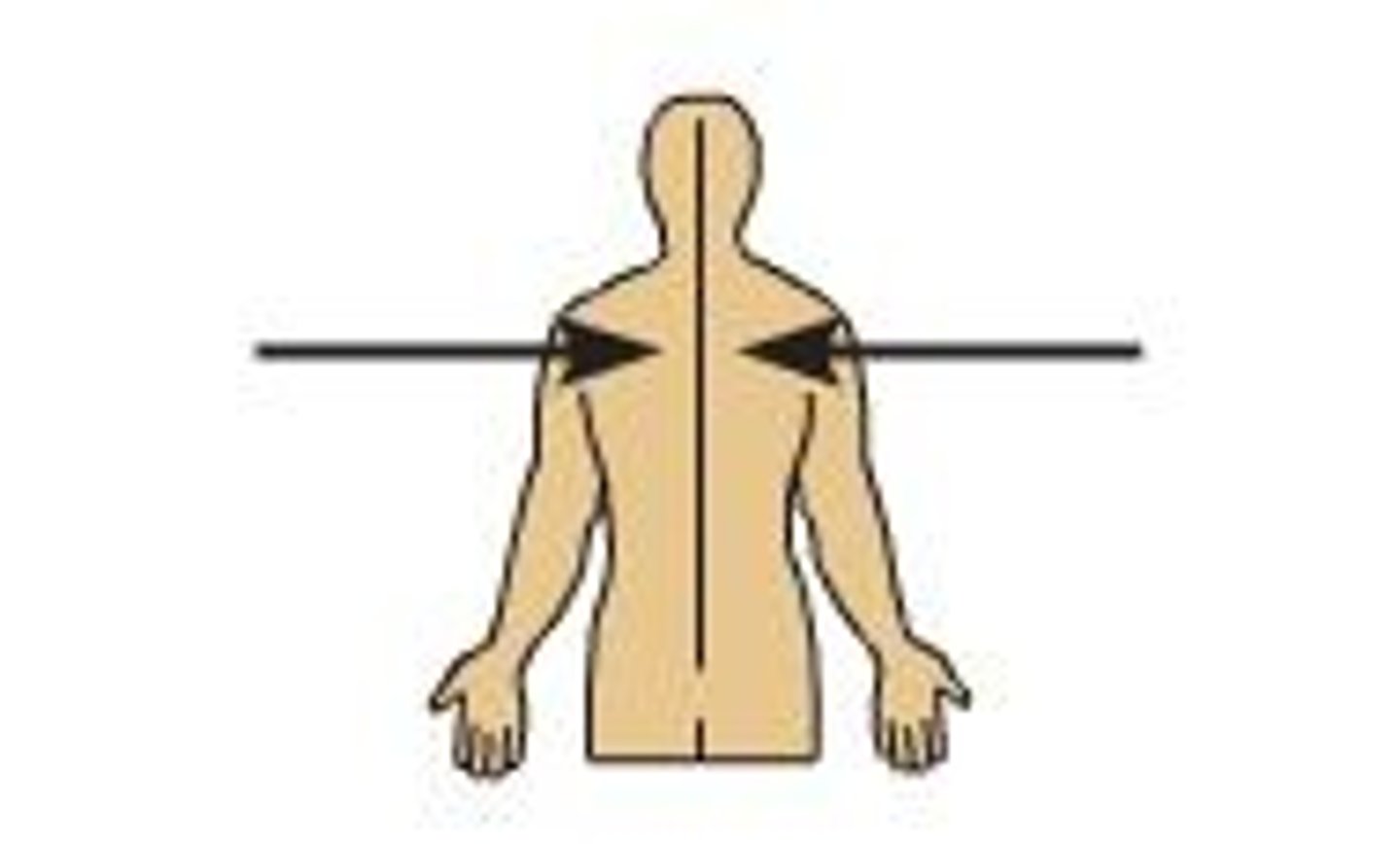
Lateral
away from the midline
Distal
away from the point of attachment
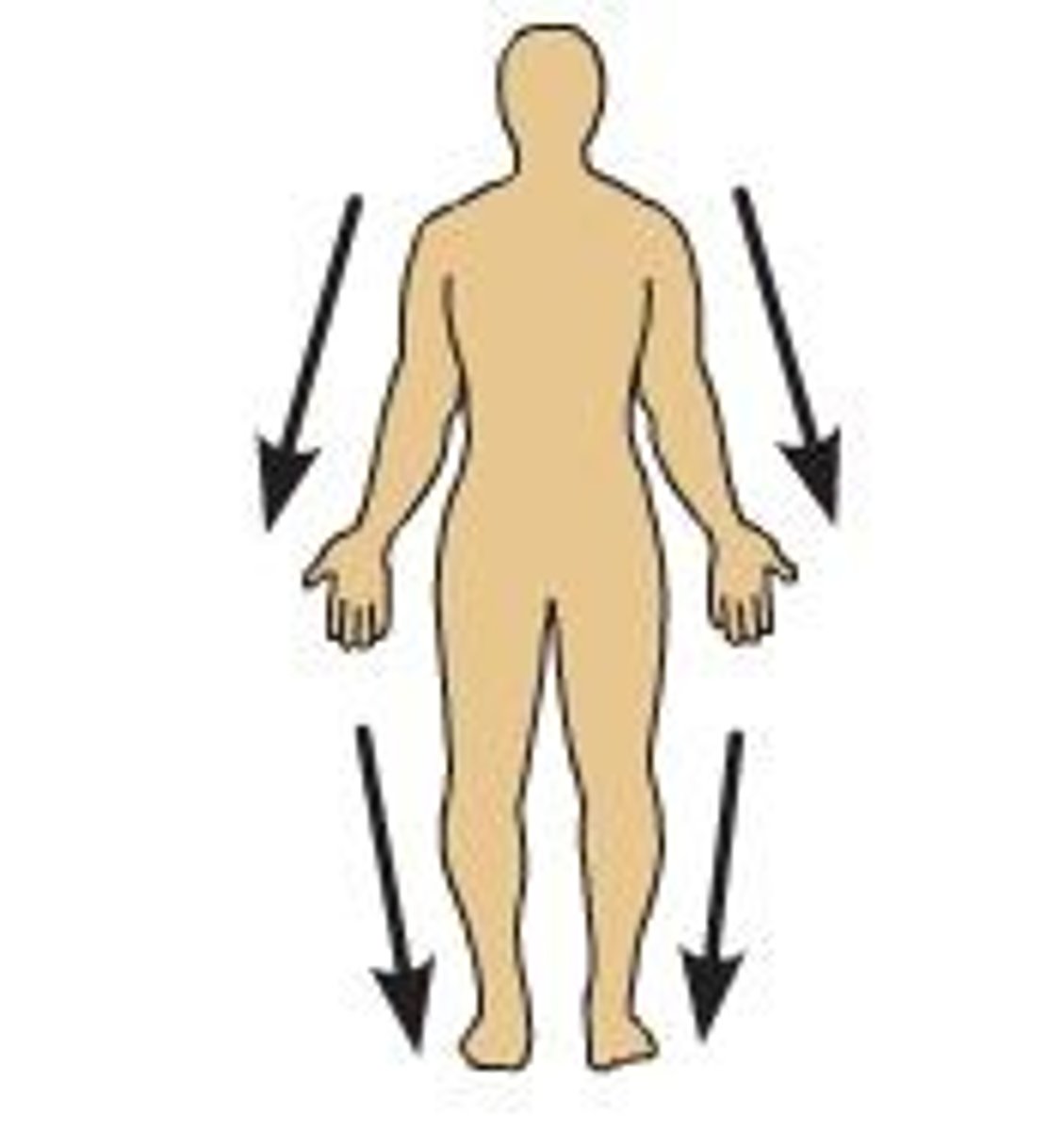
Proximal
Closer to the point of attachment
